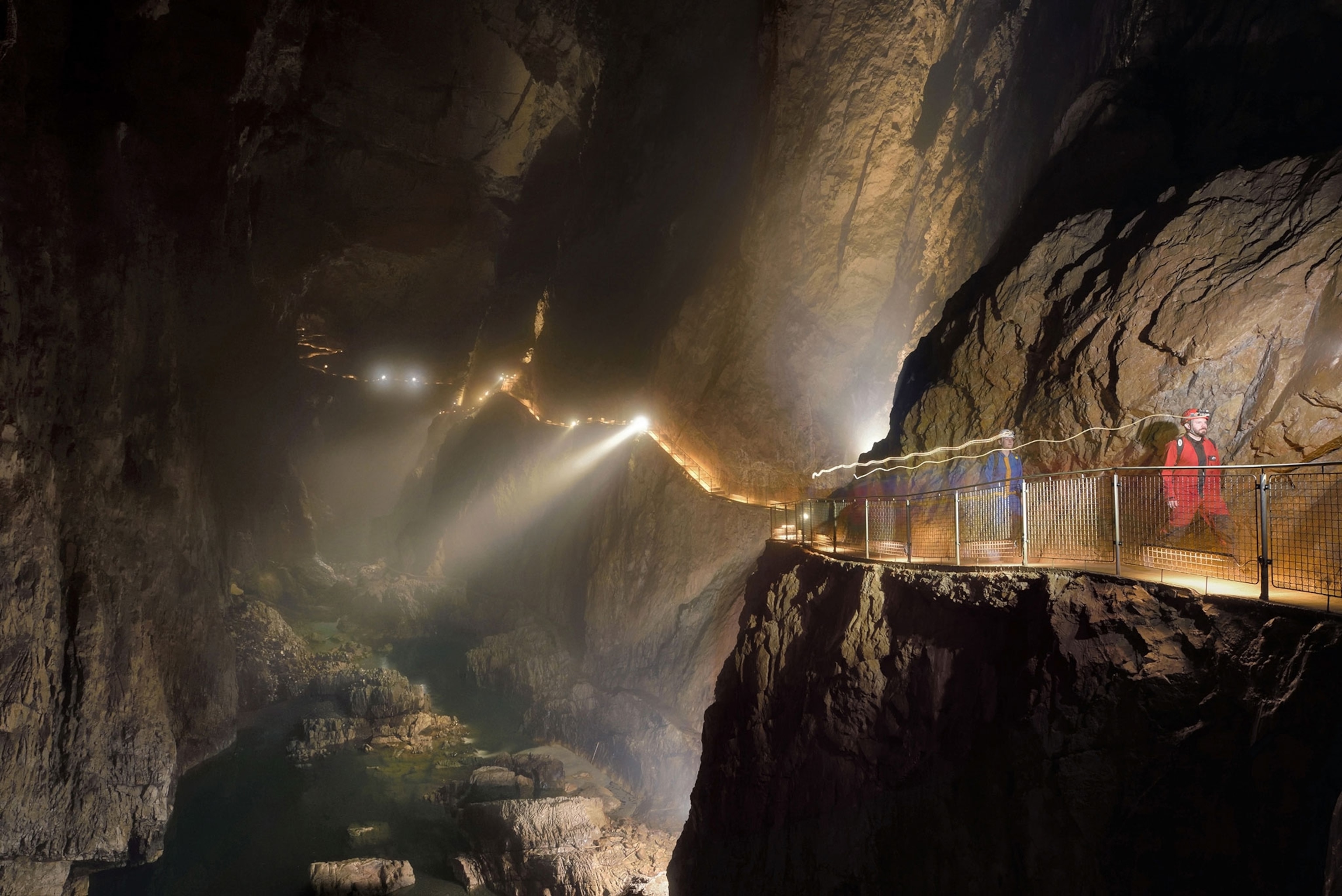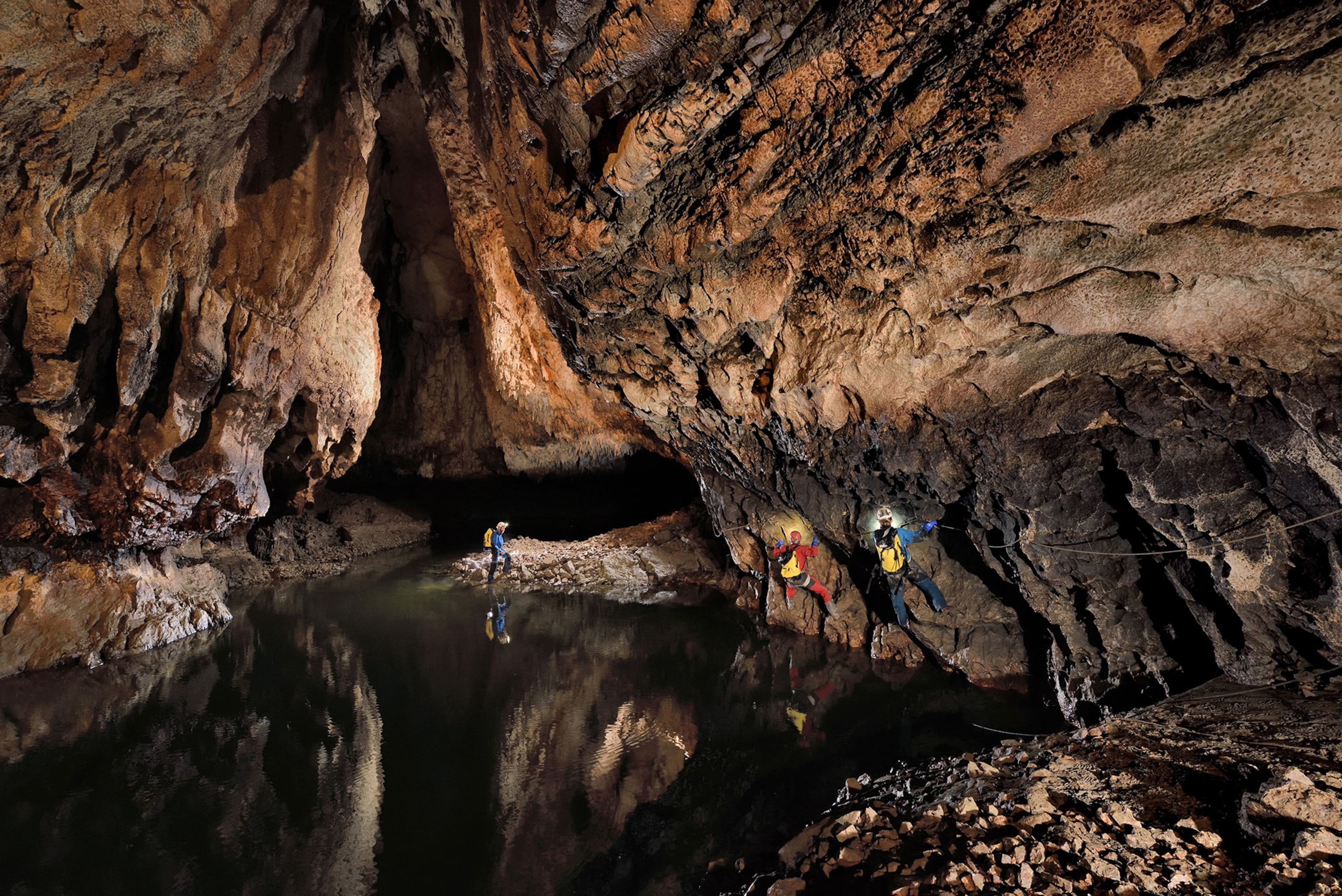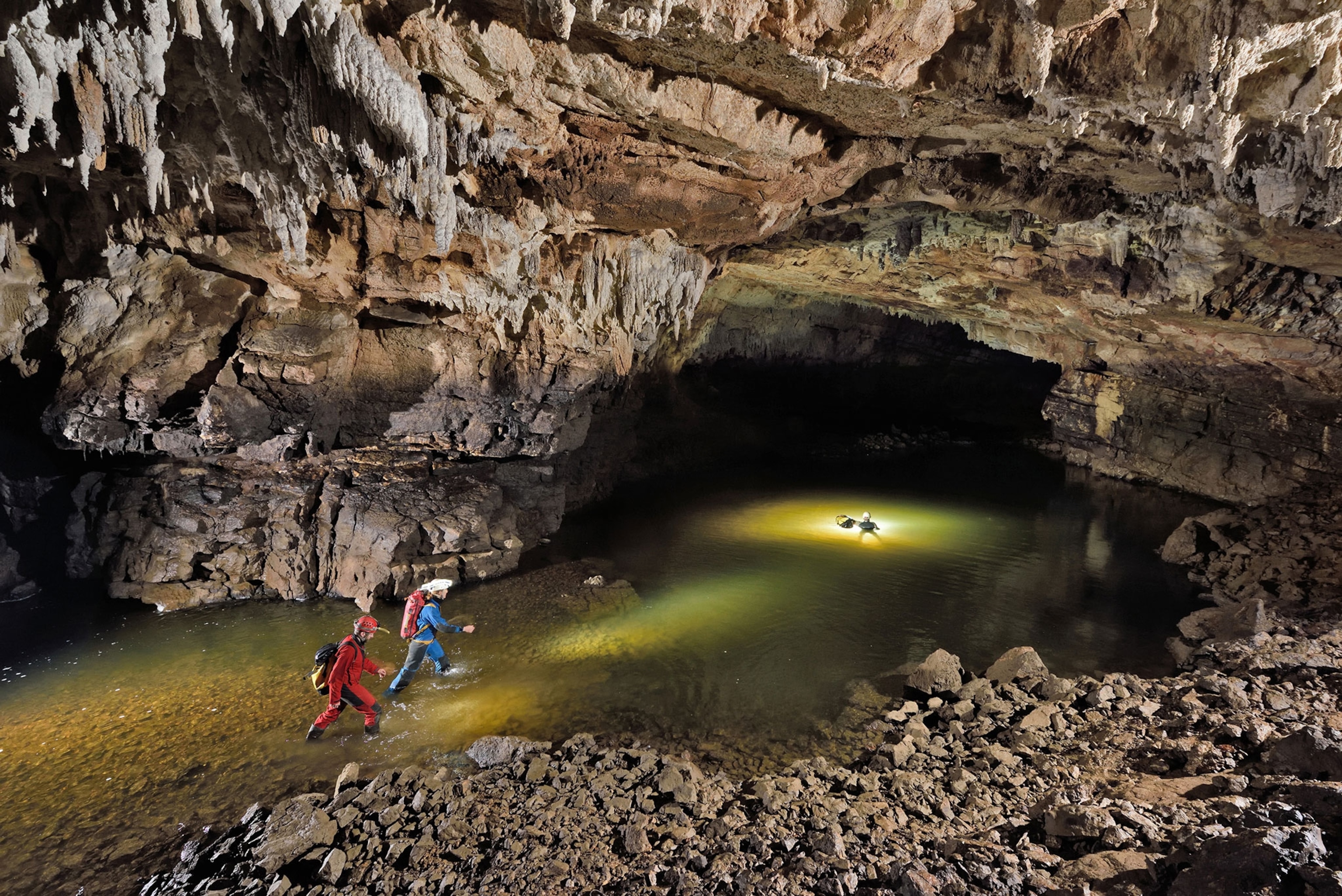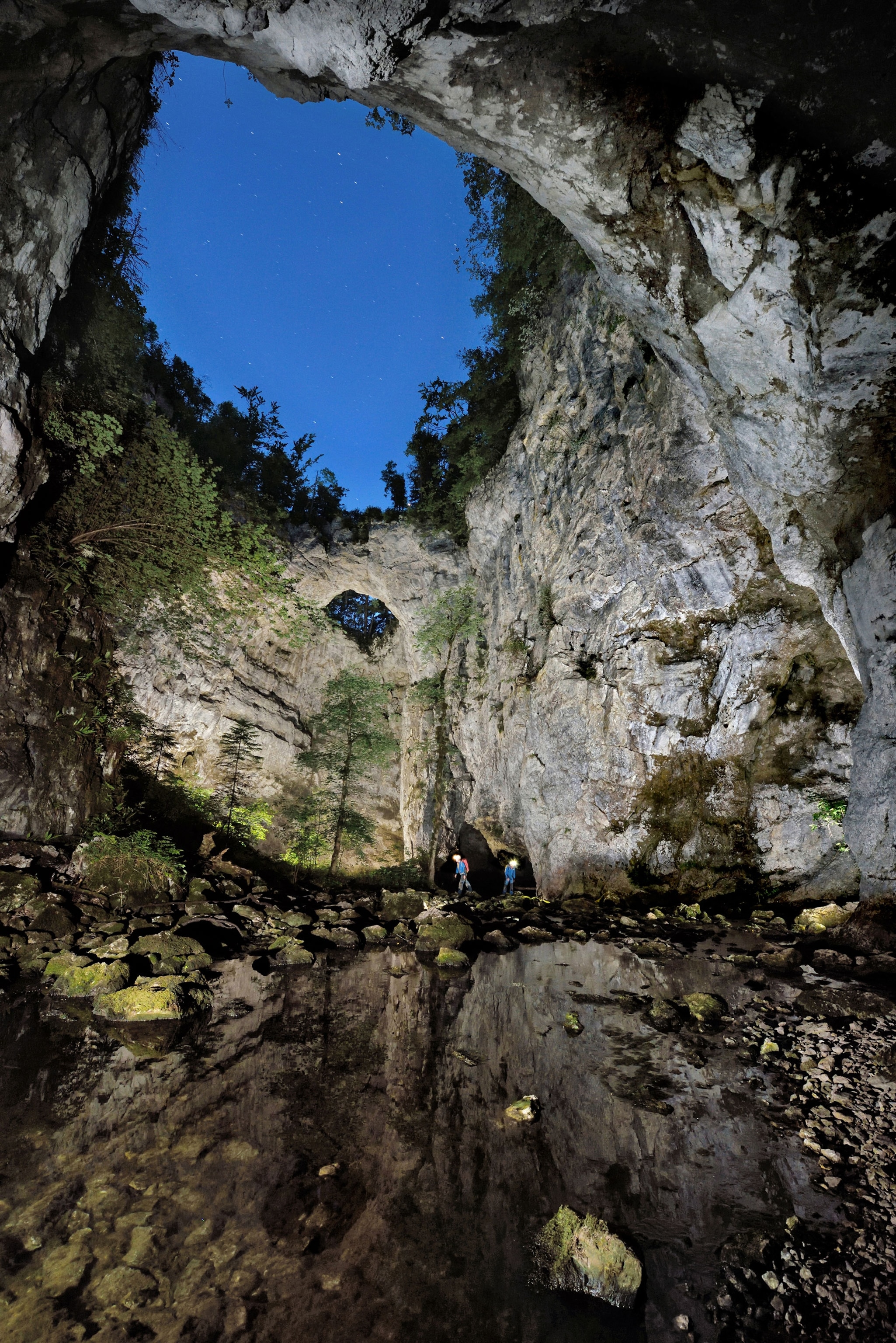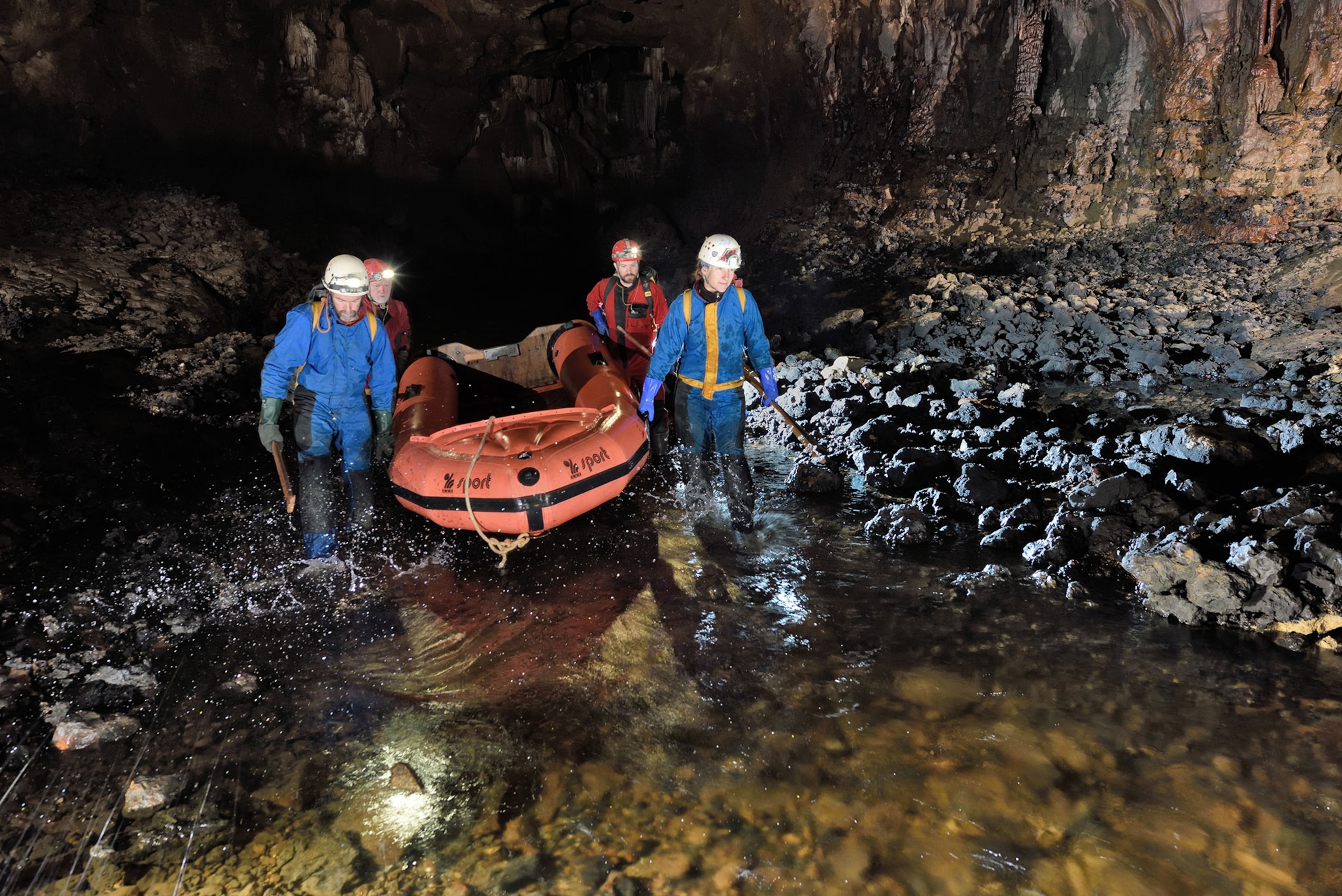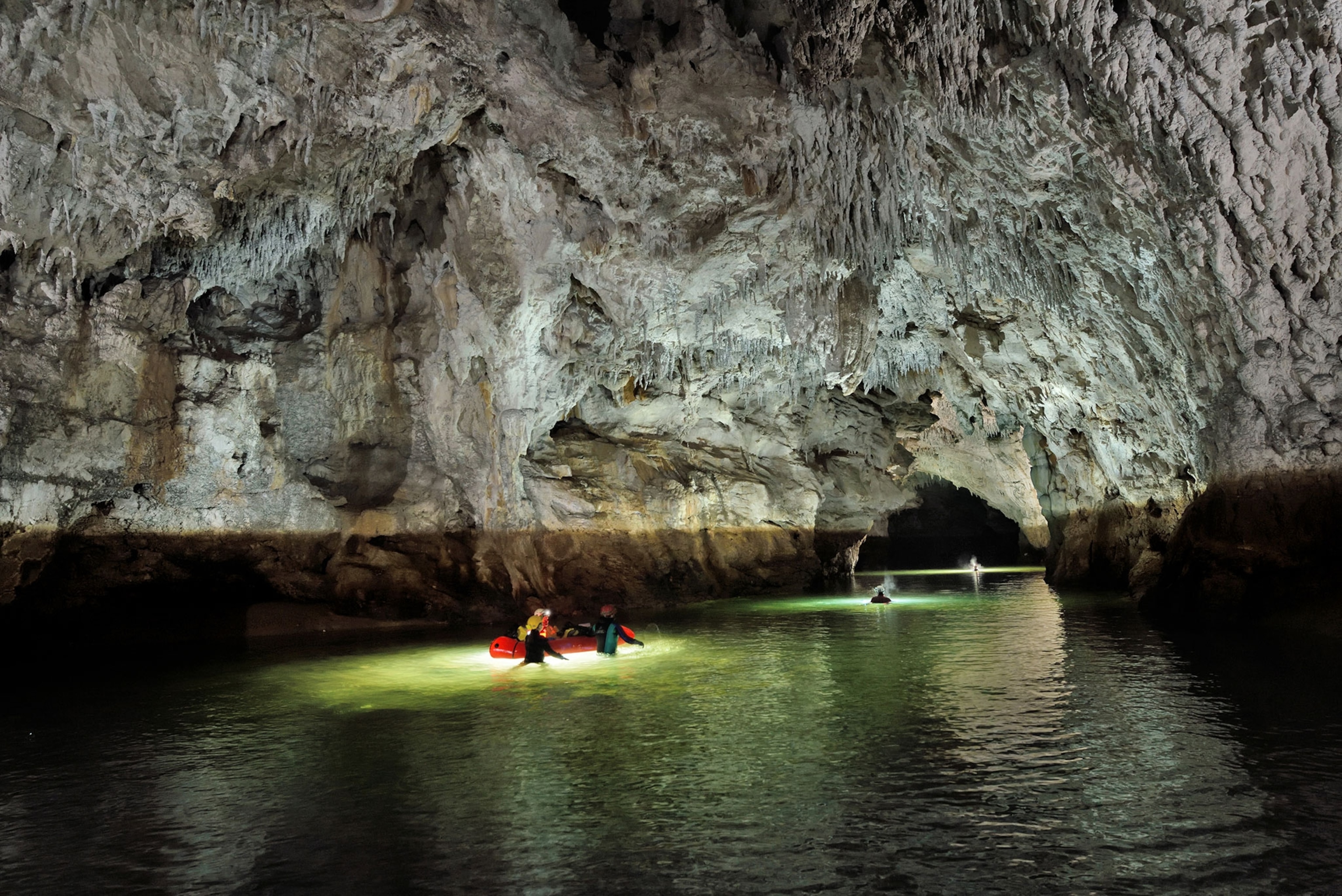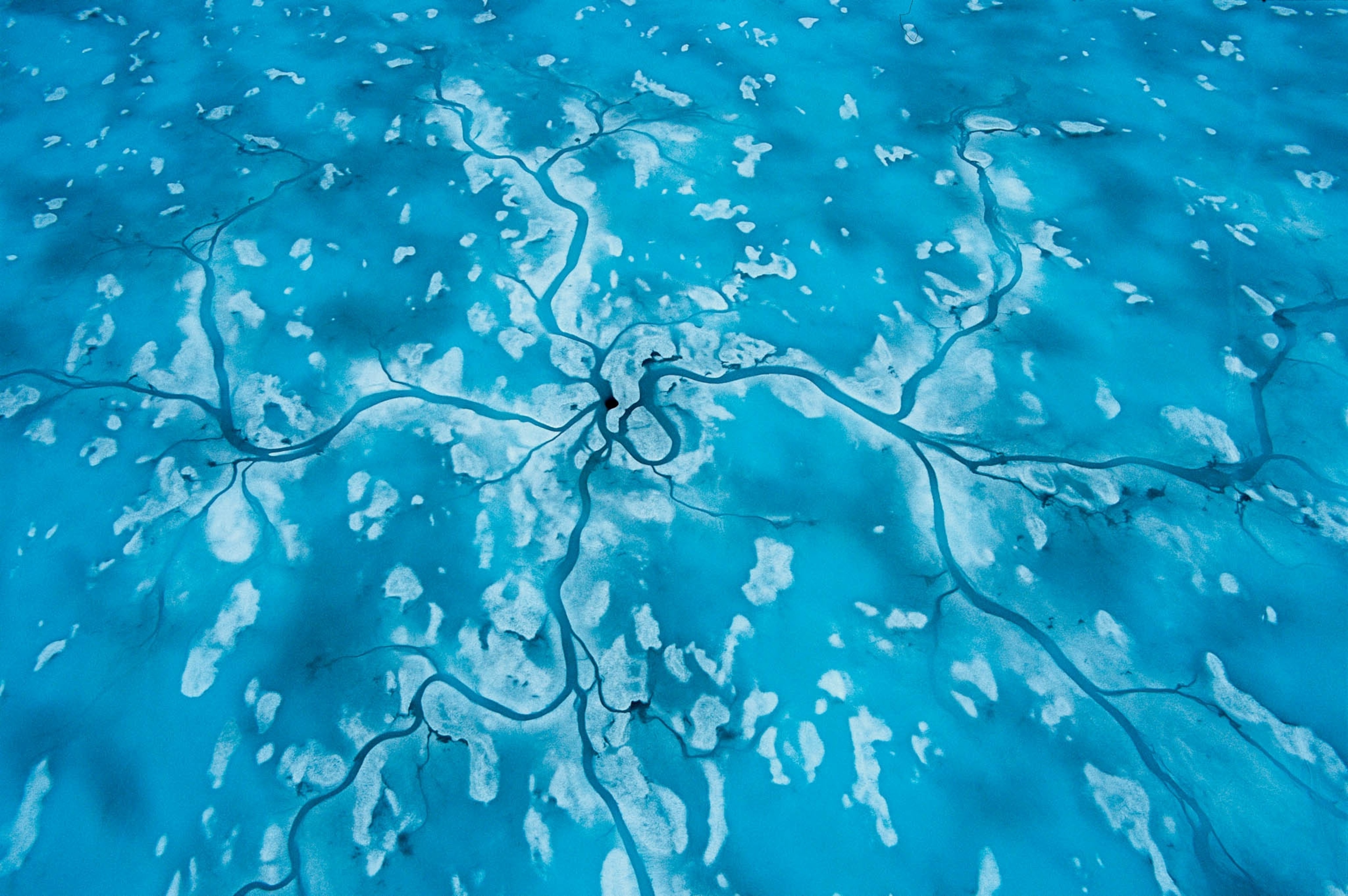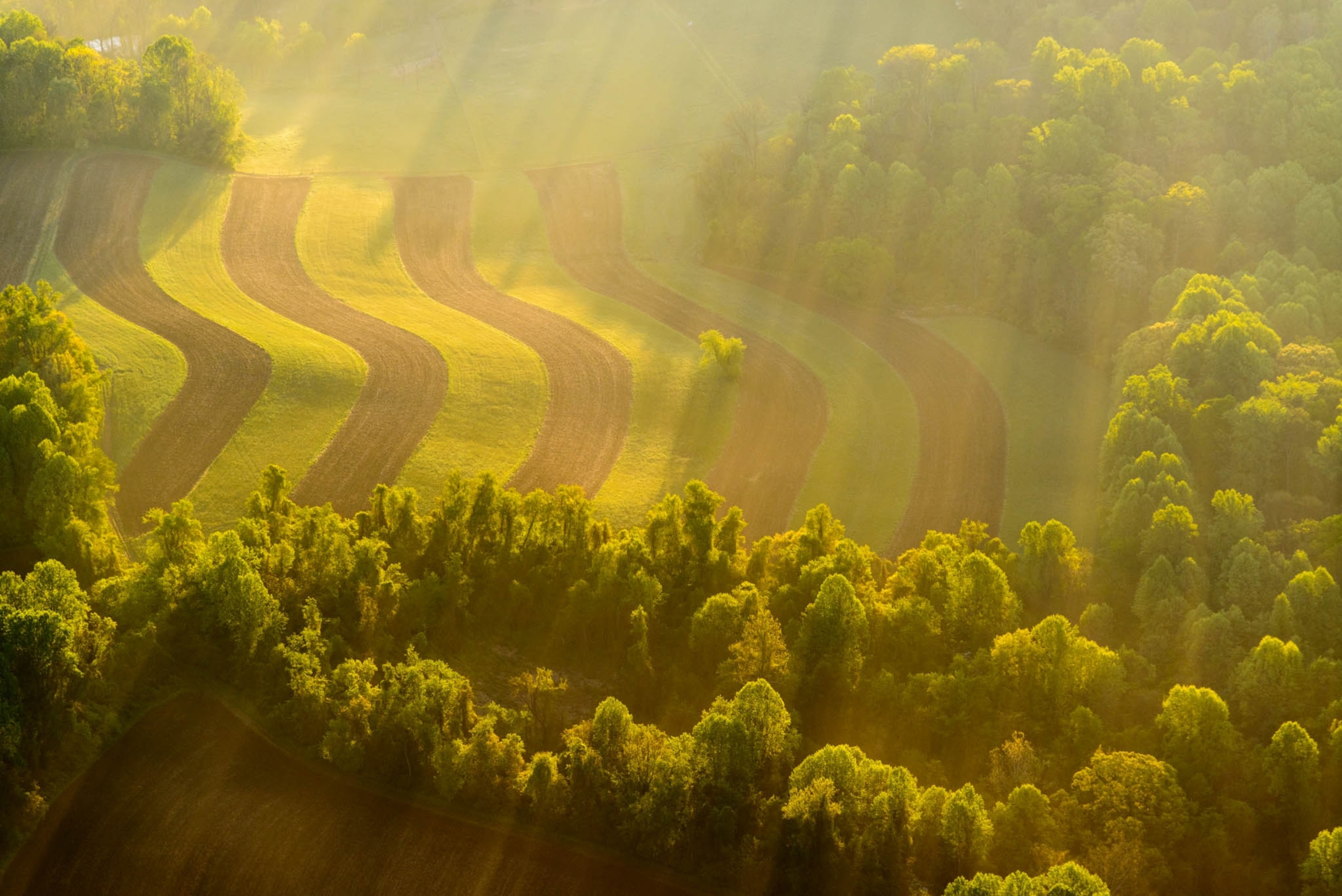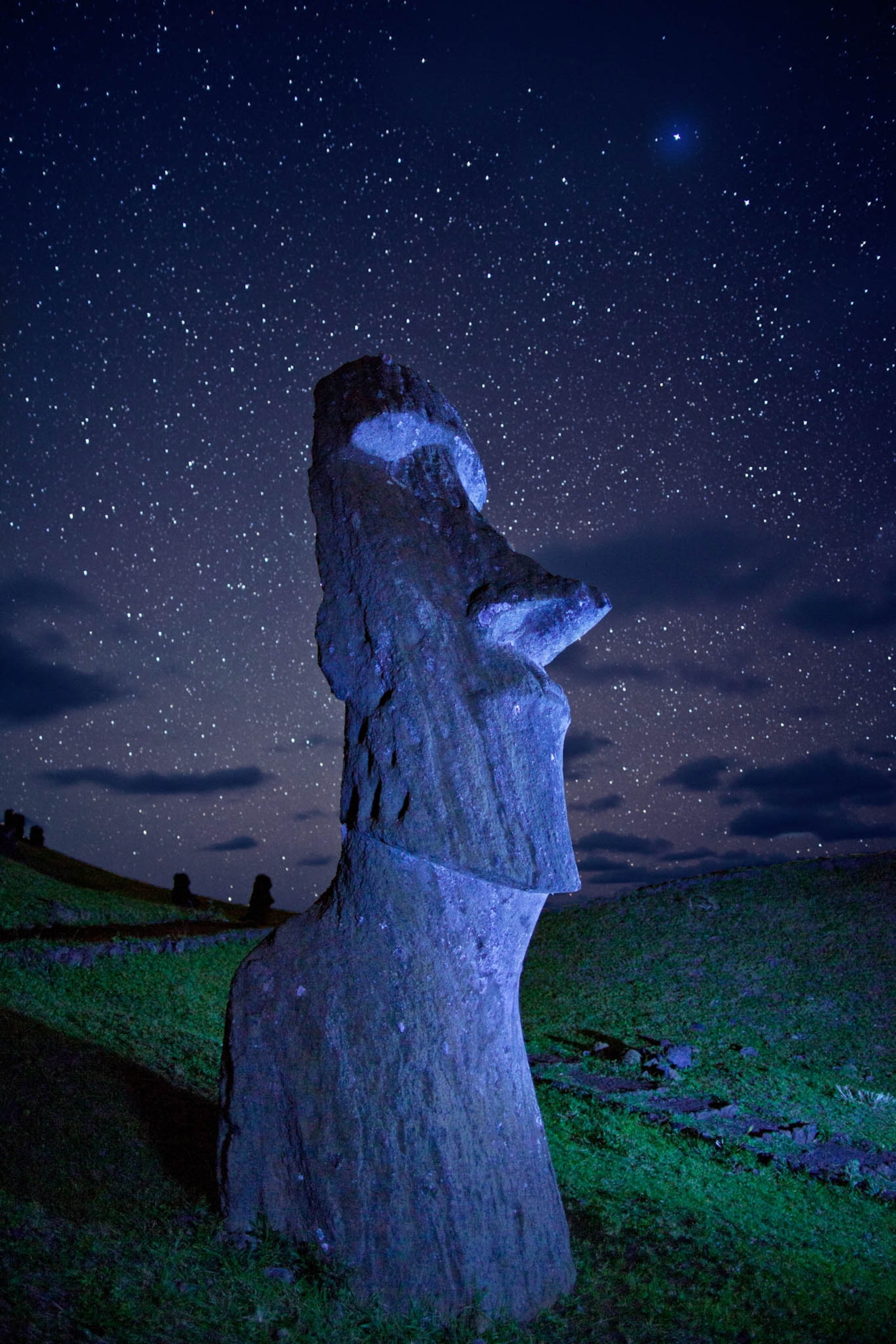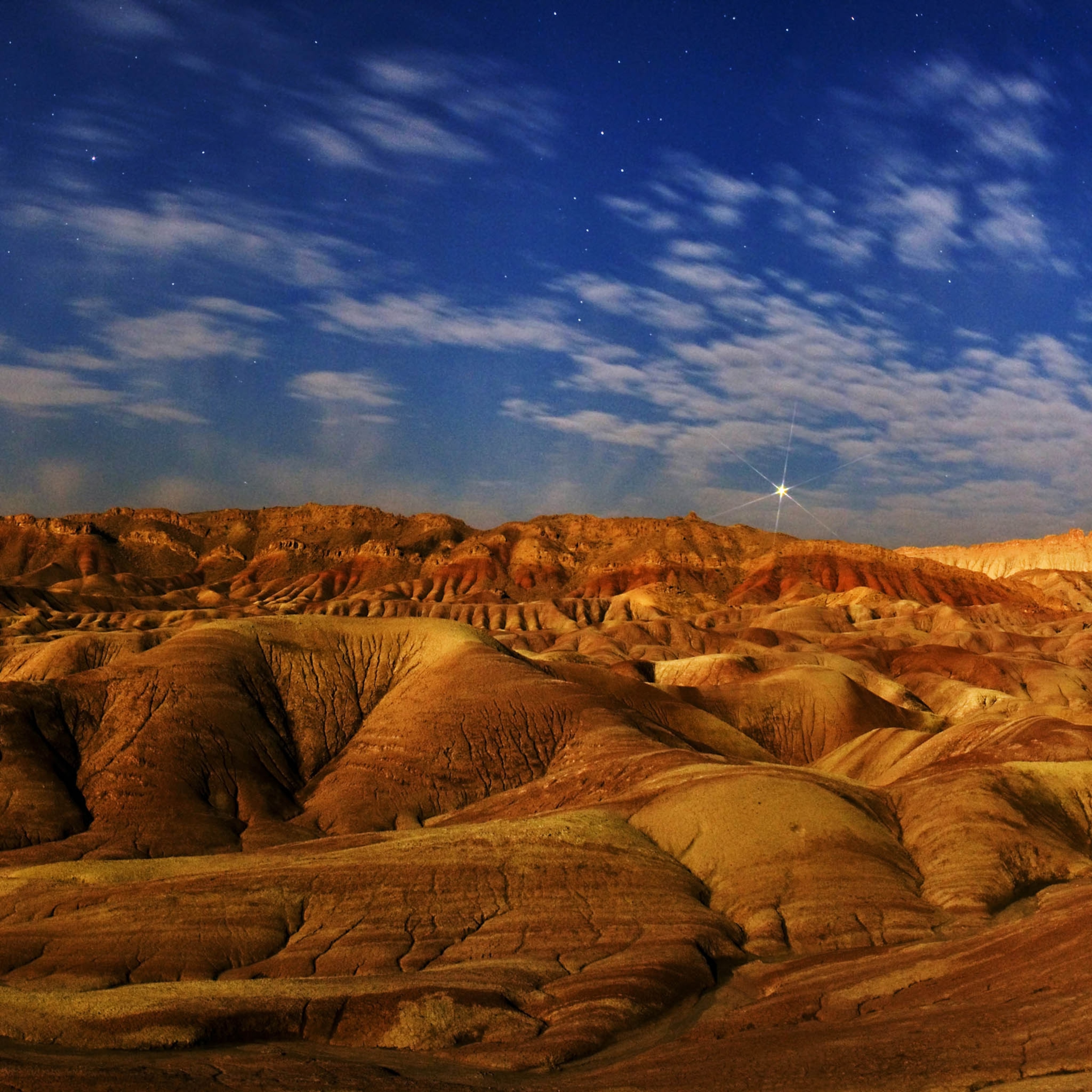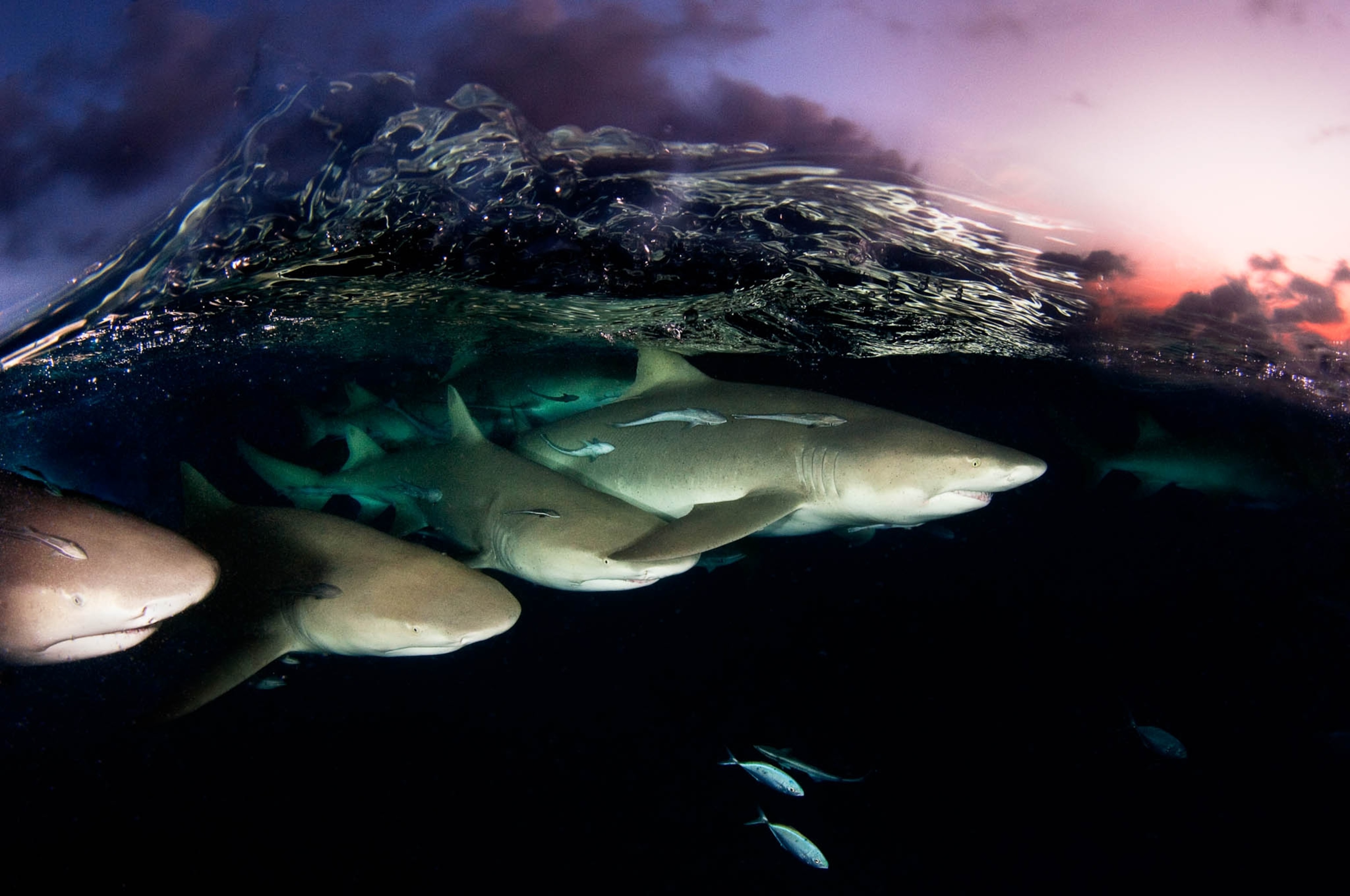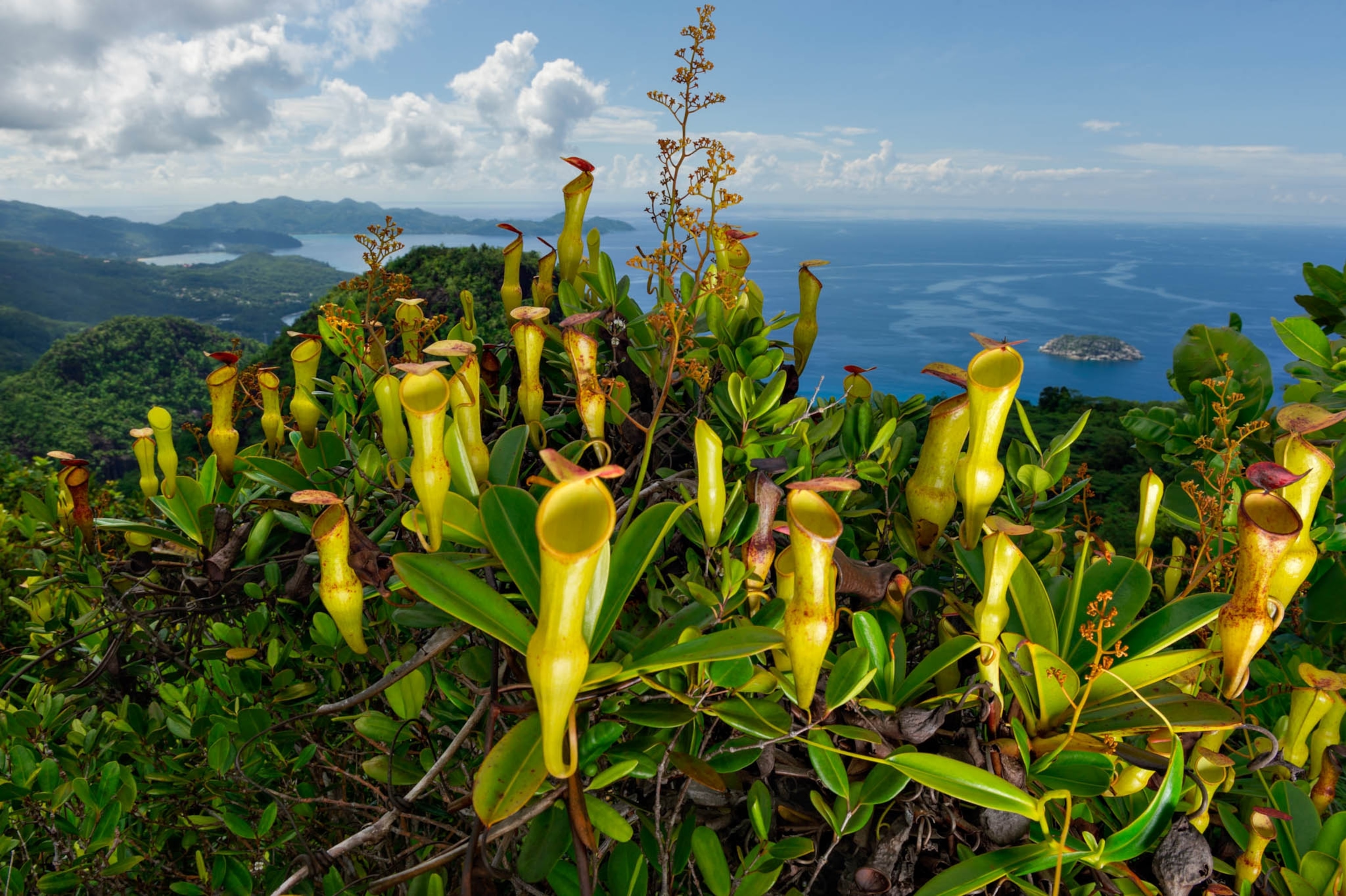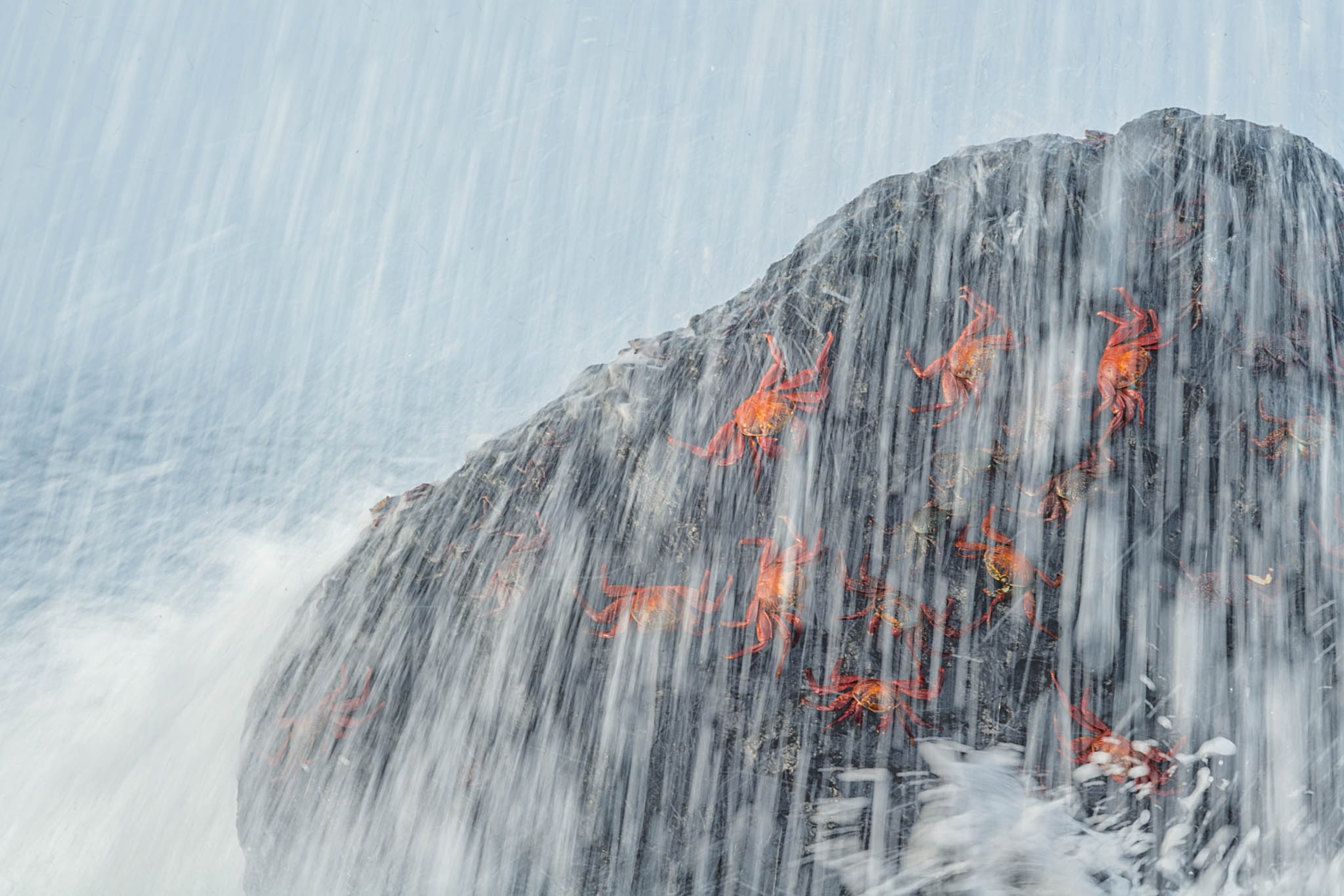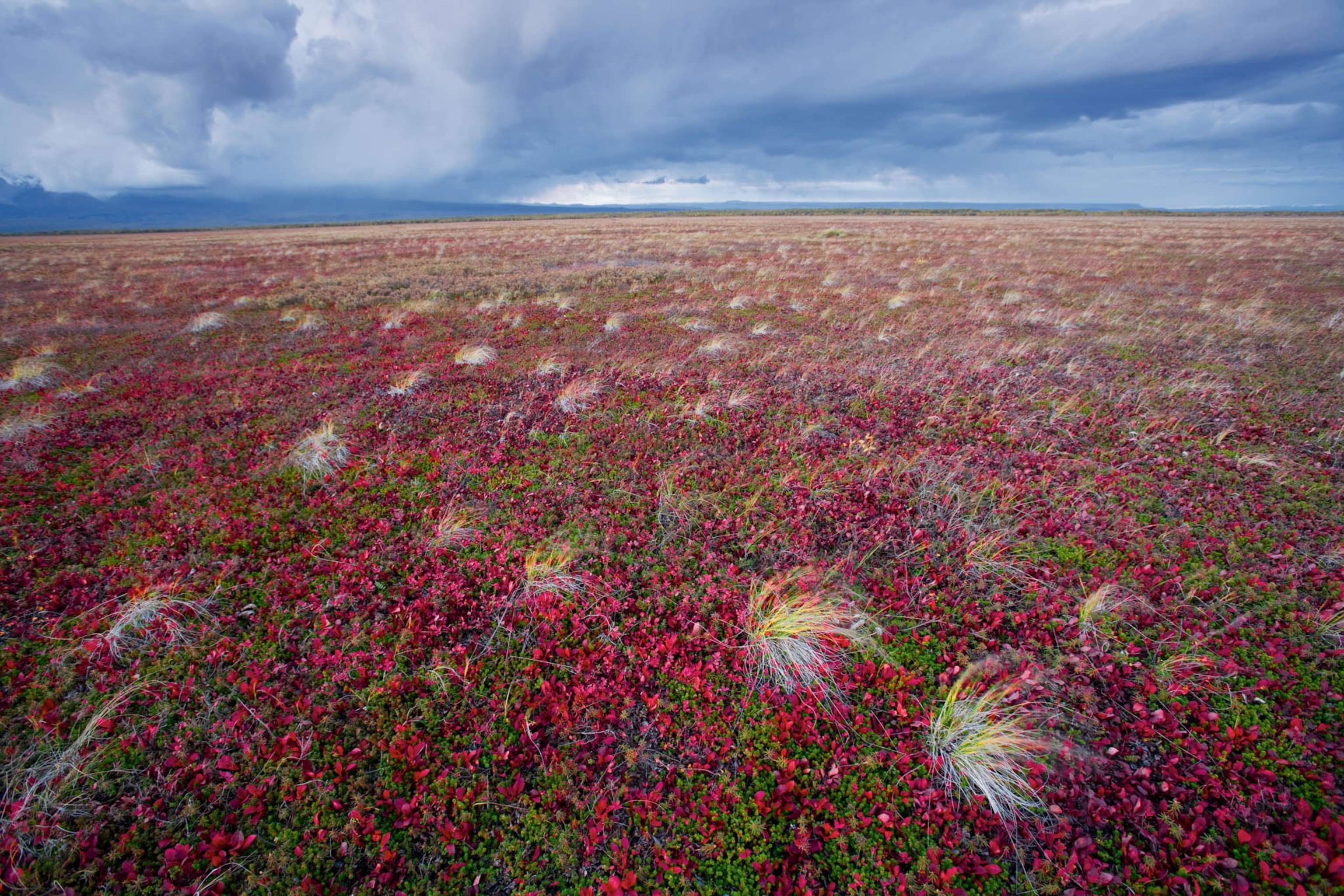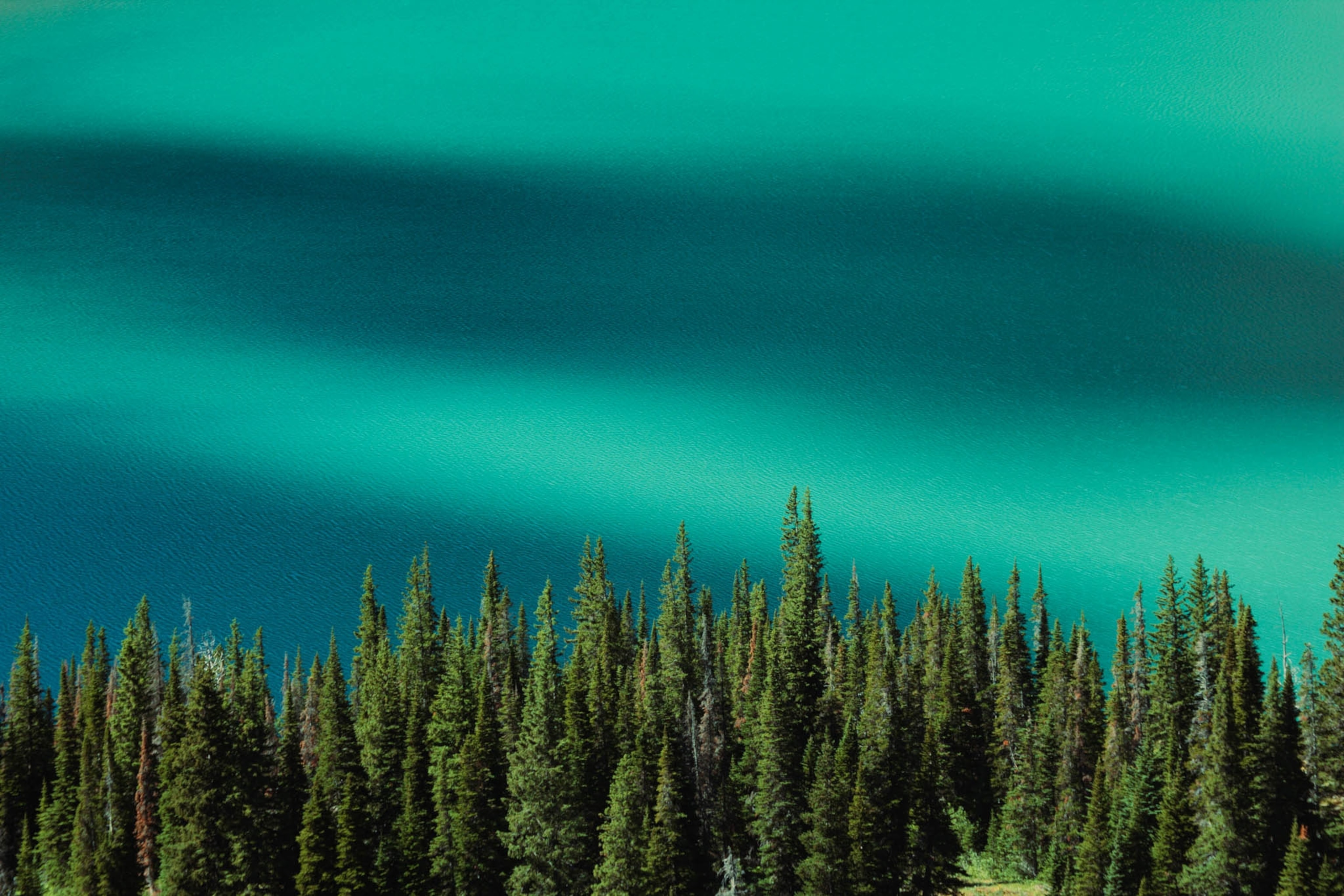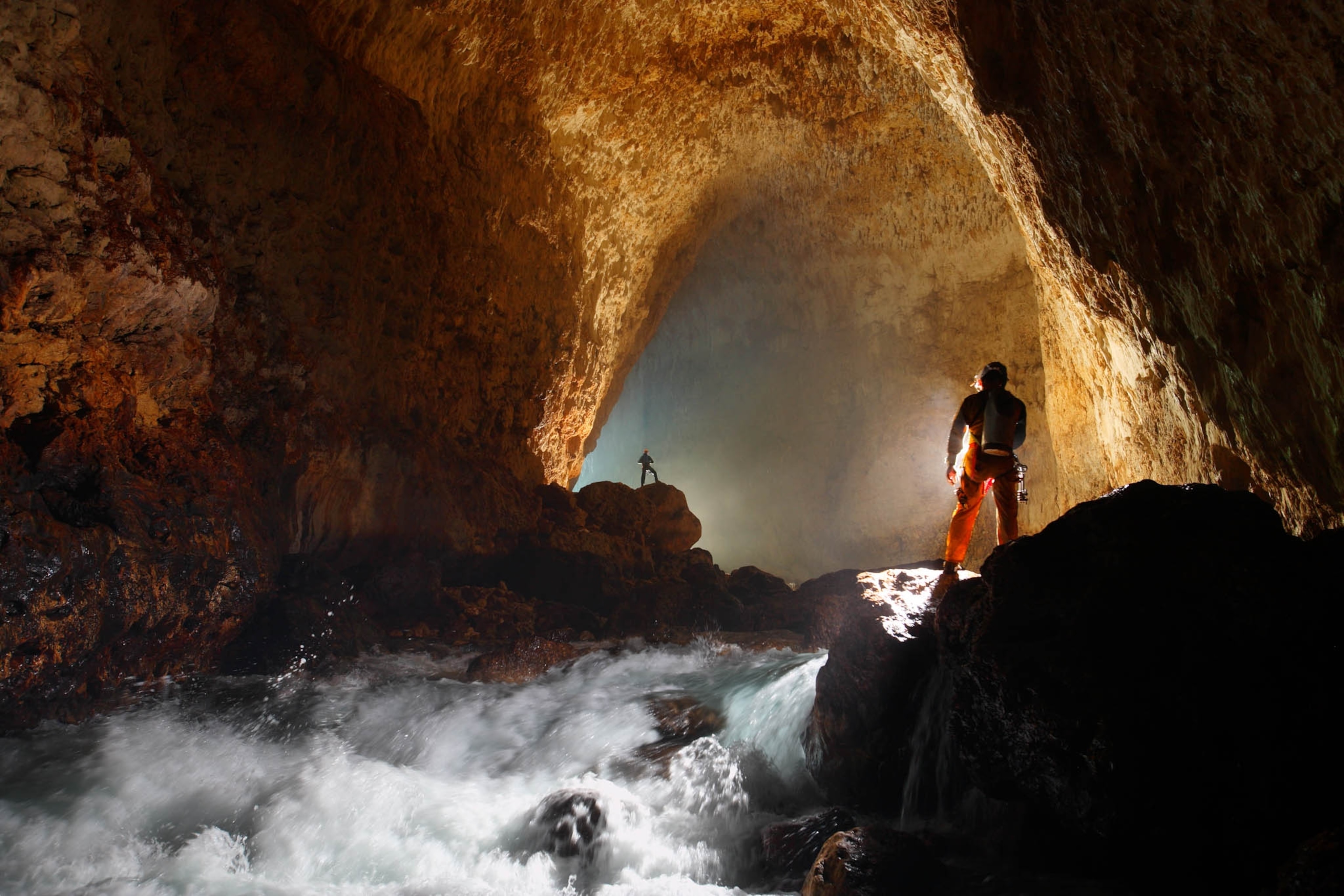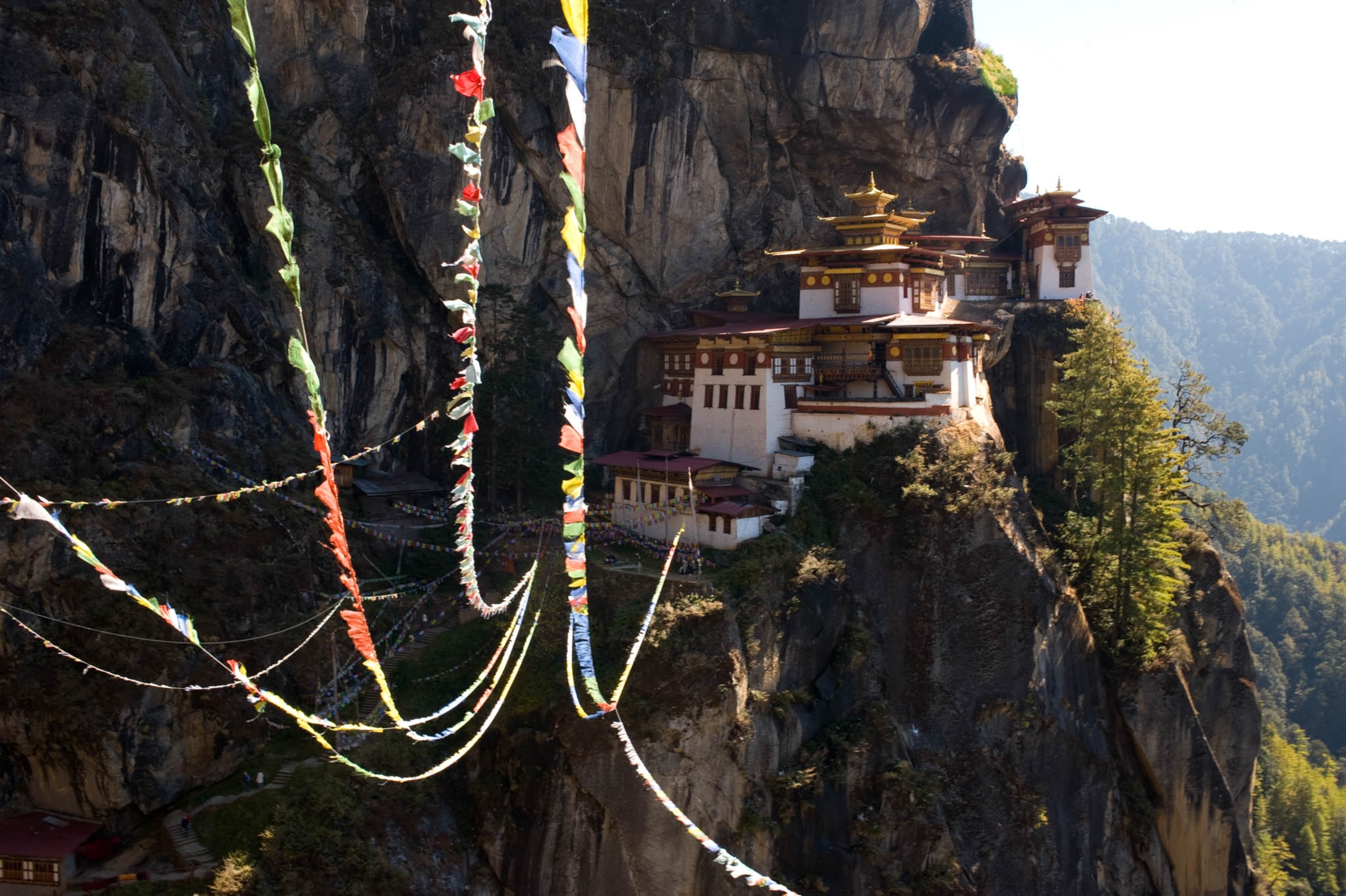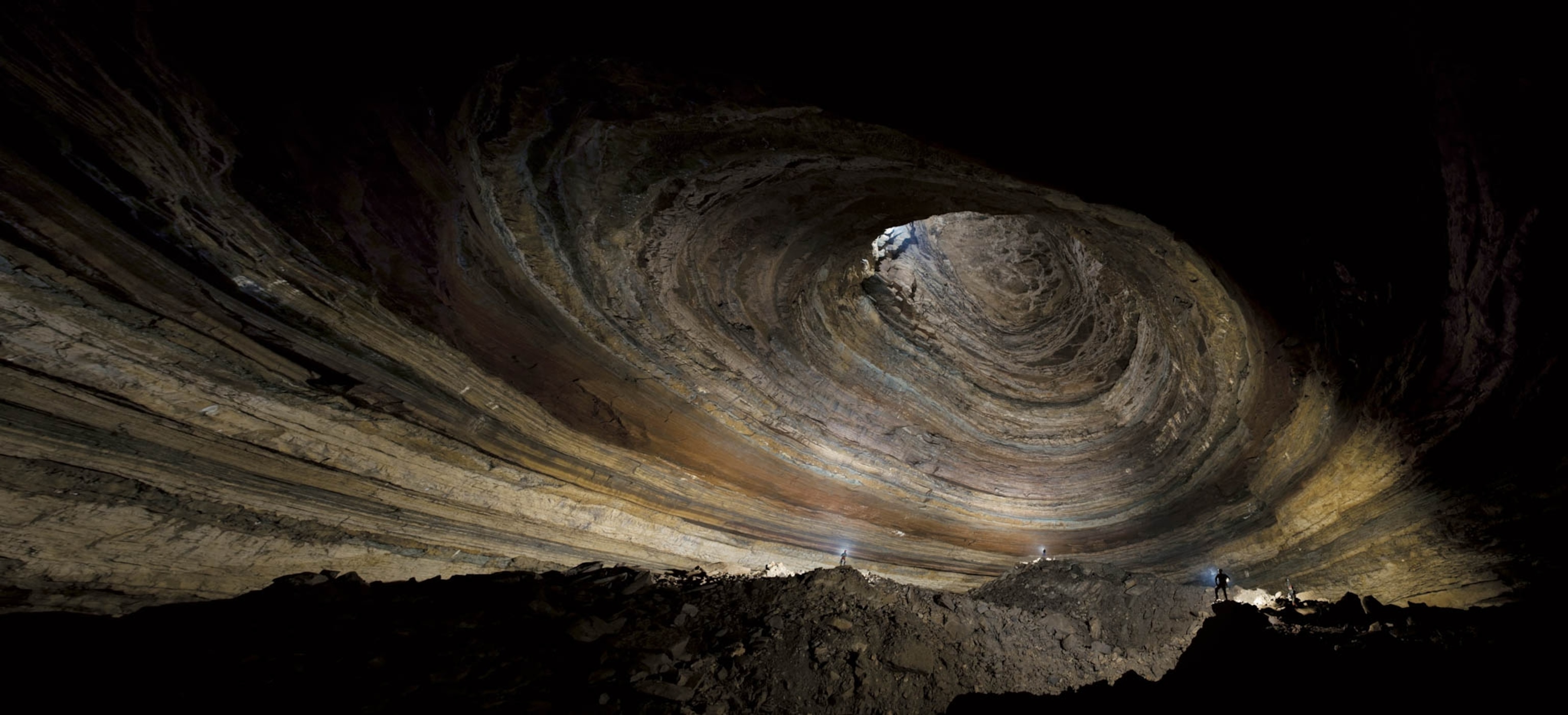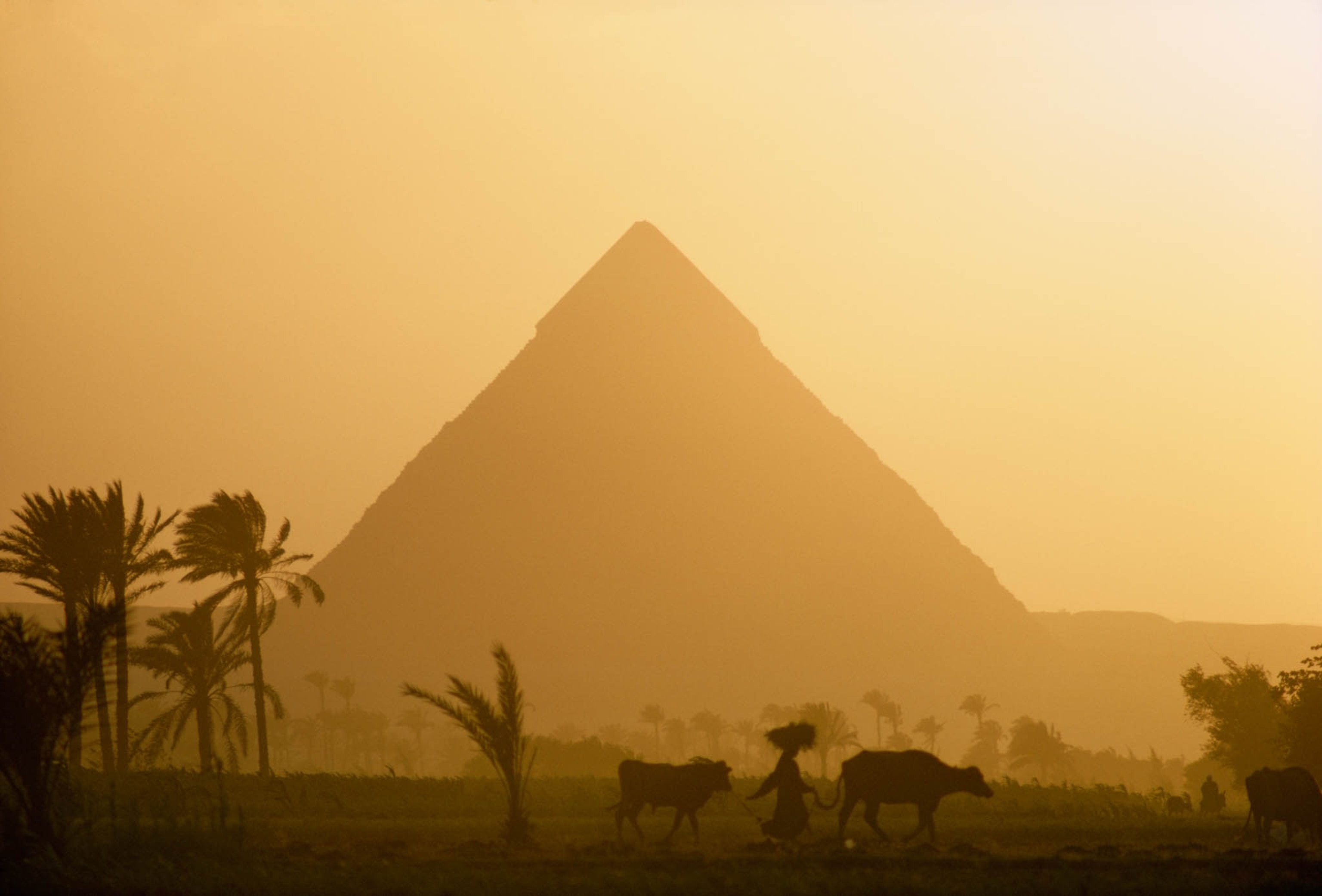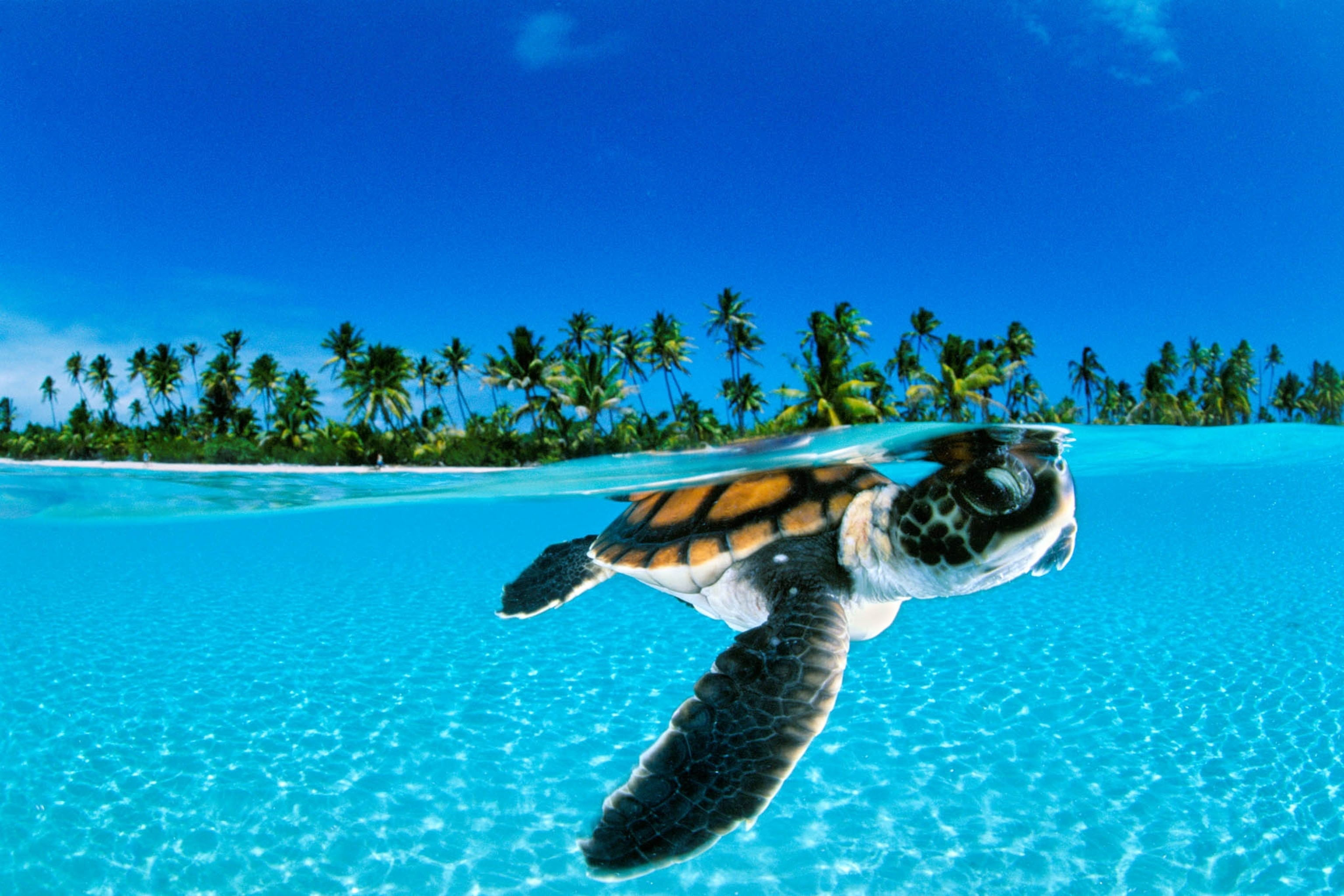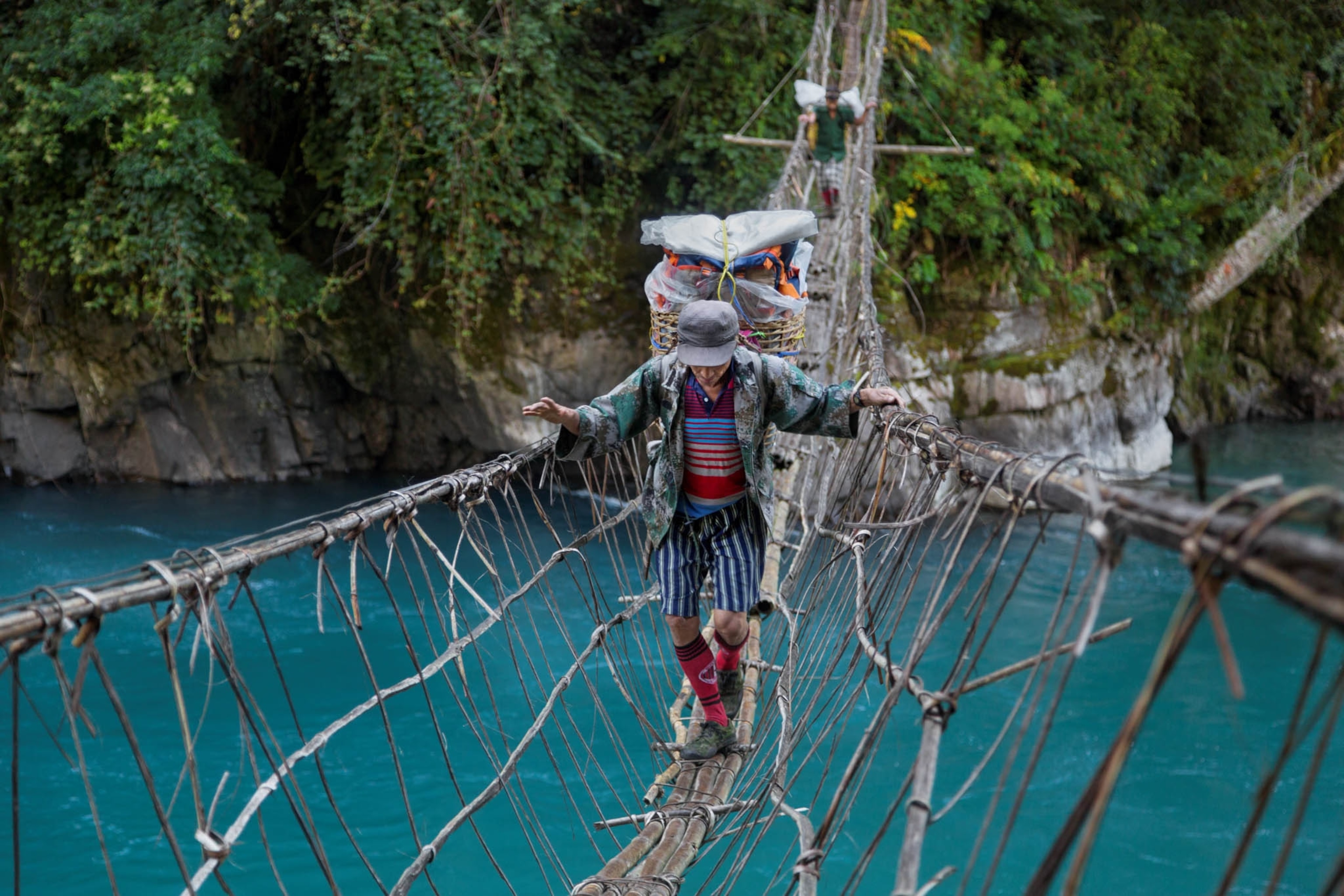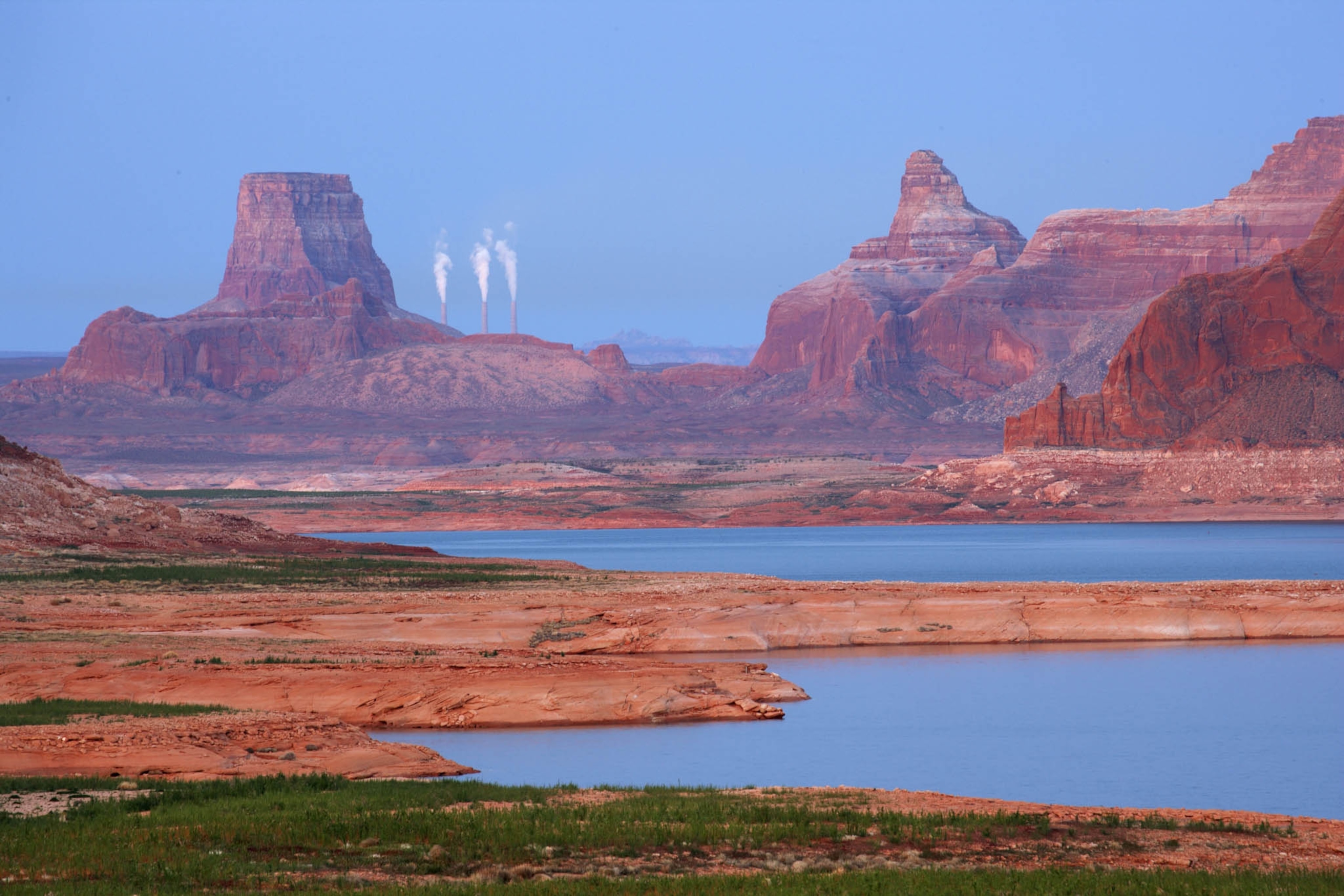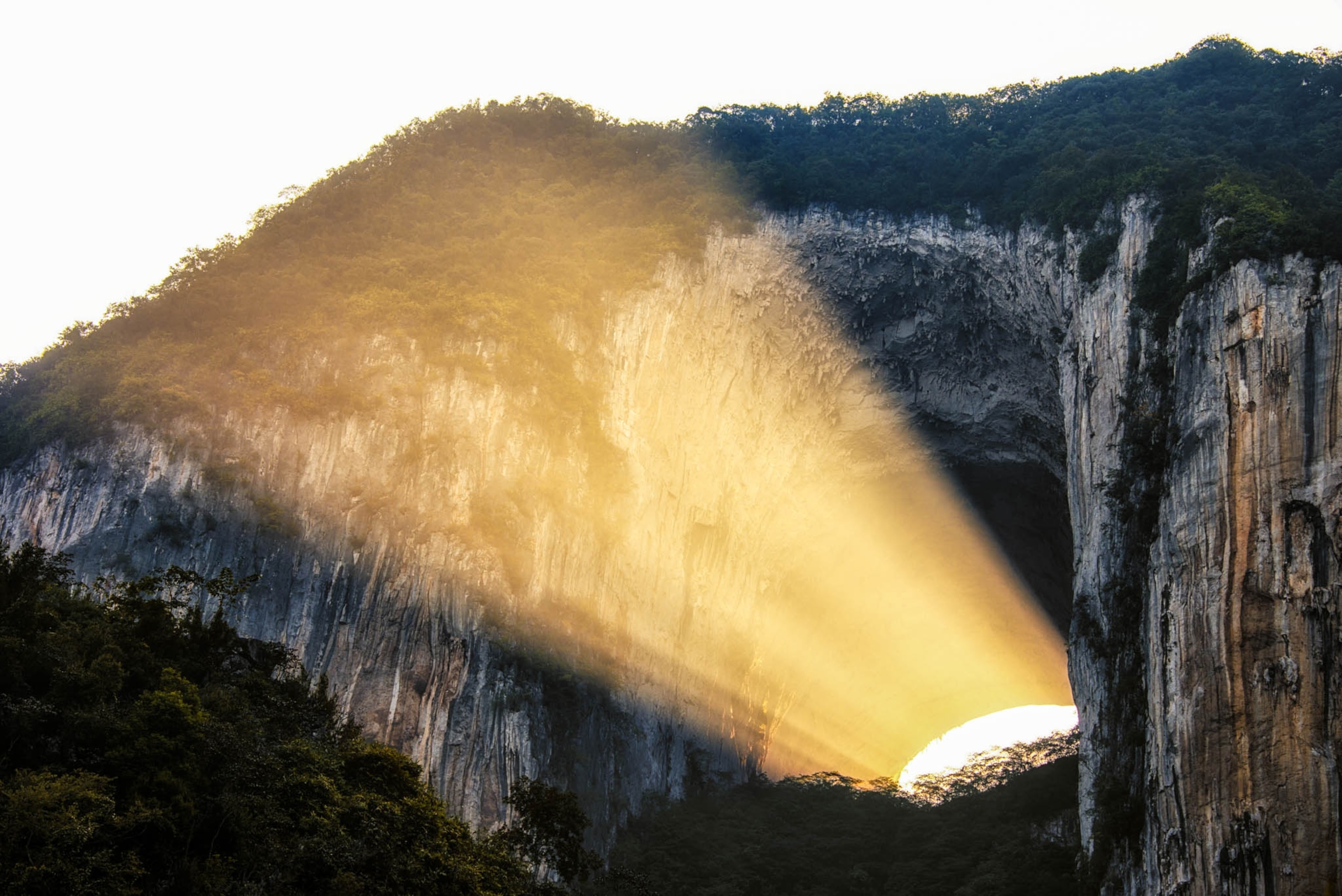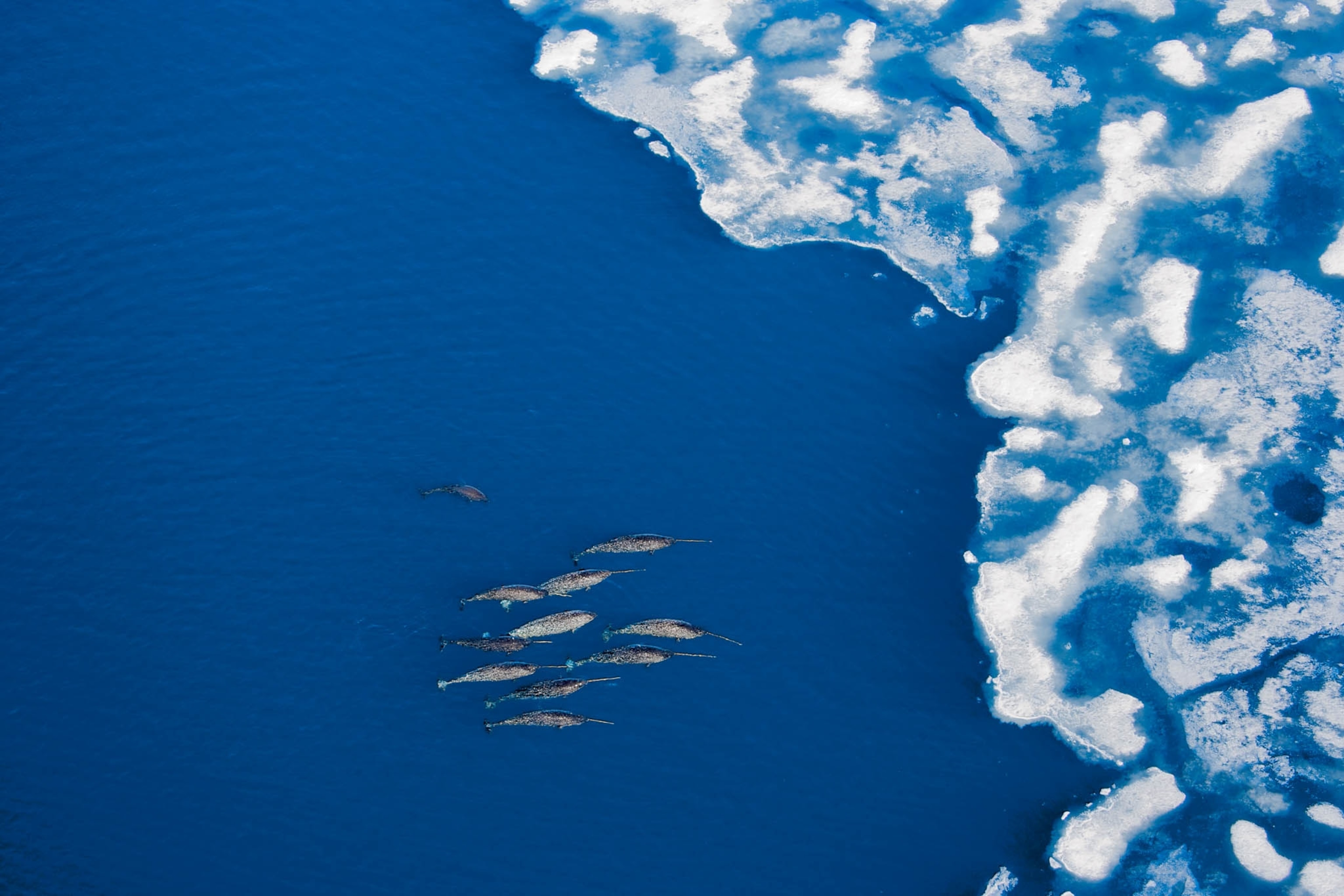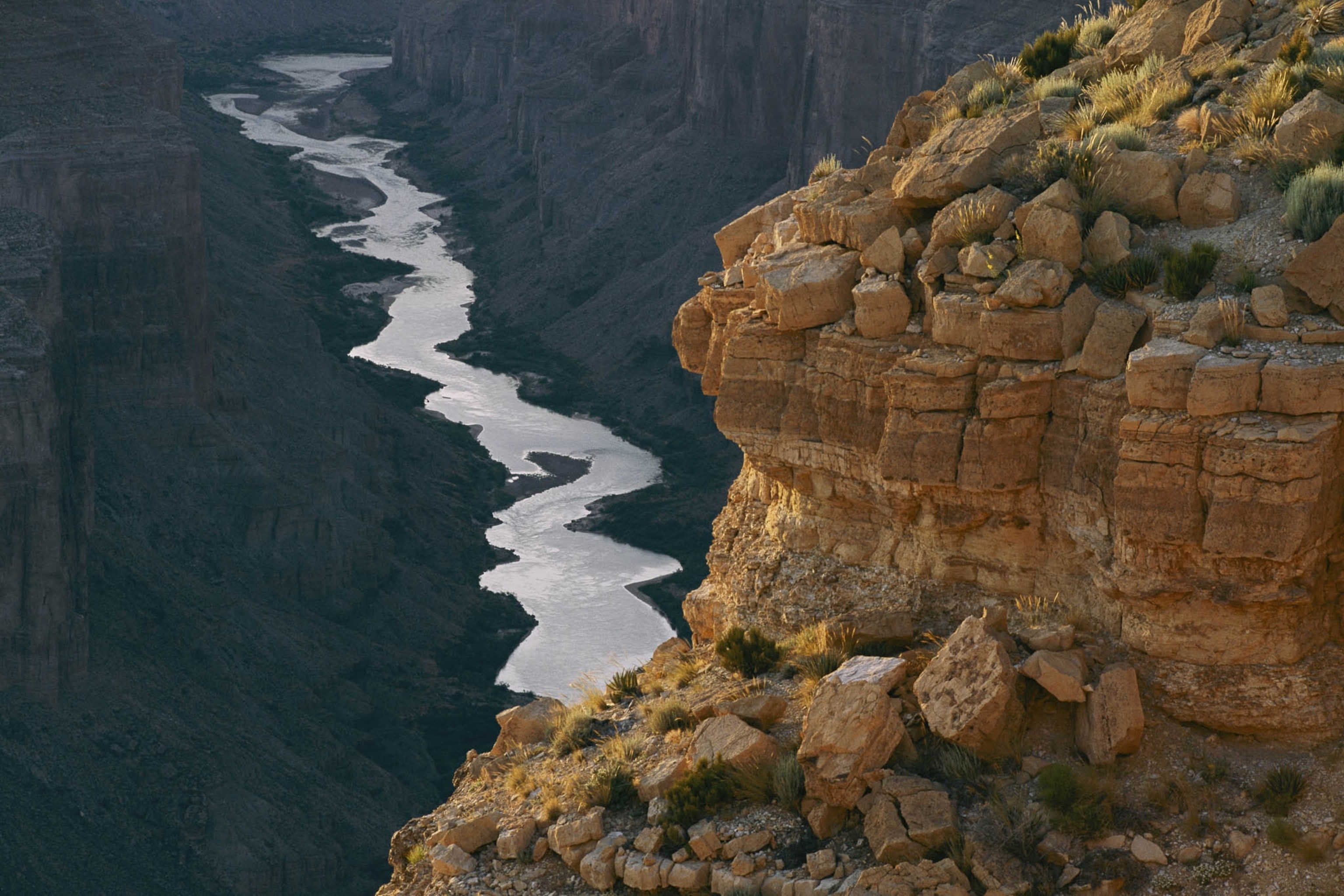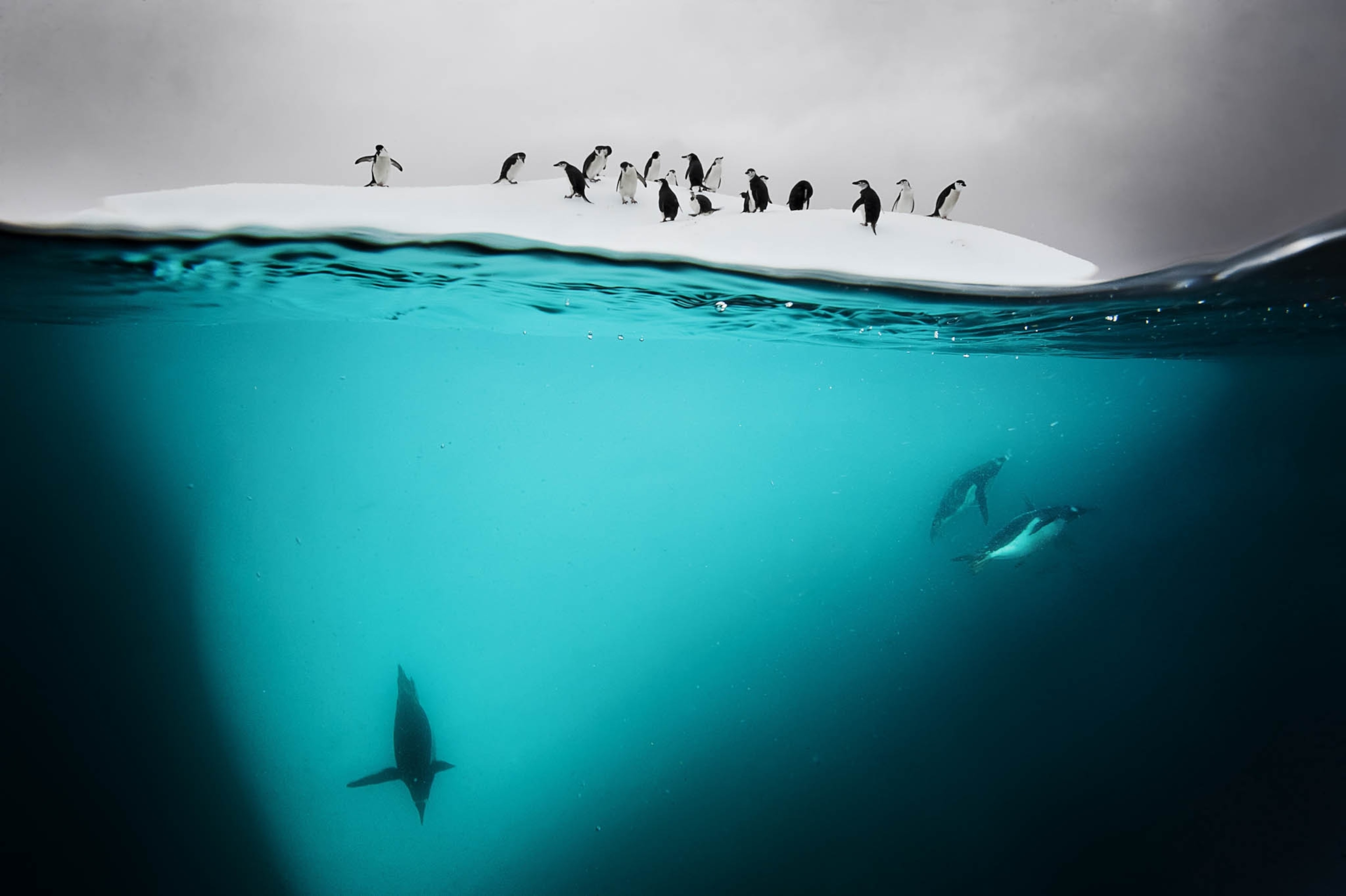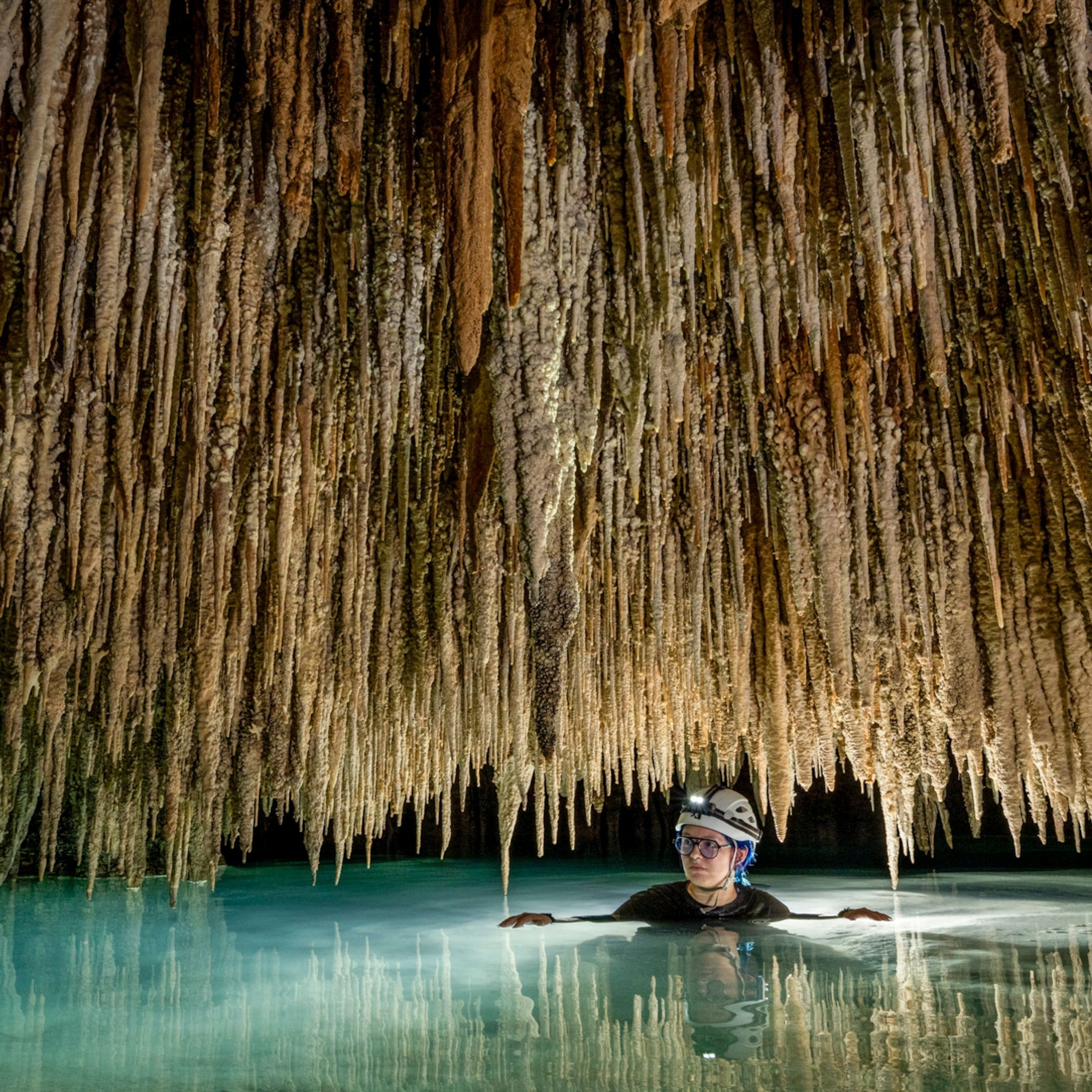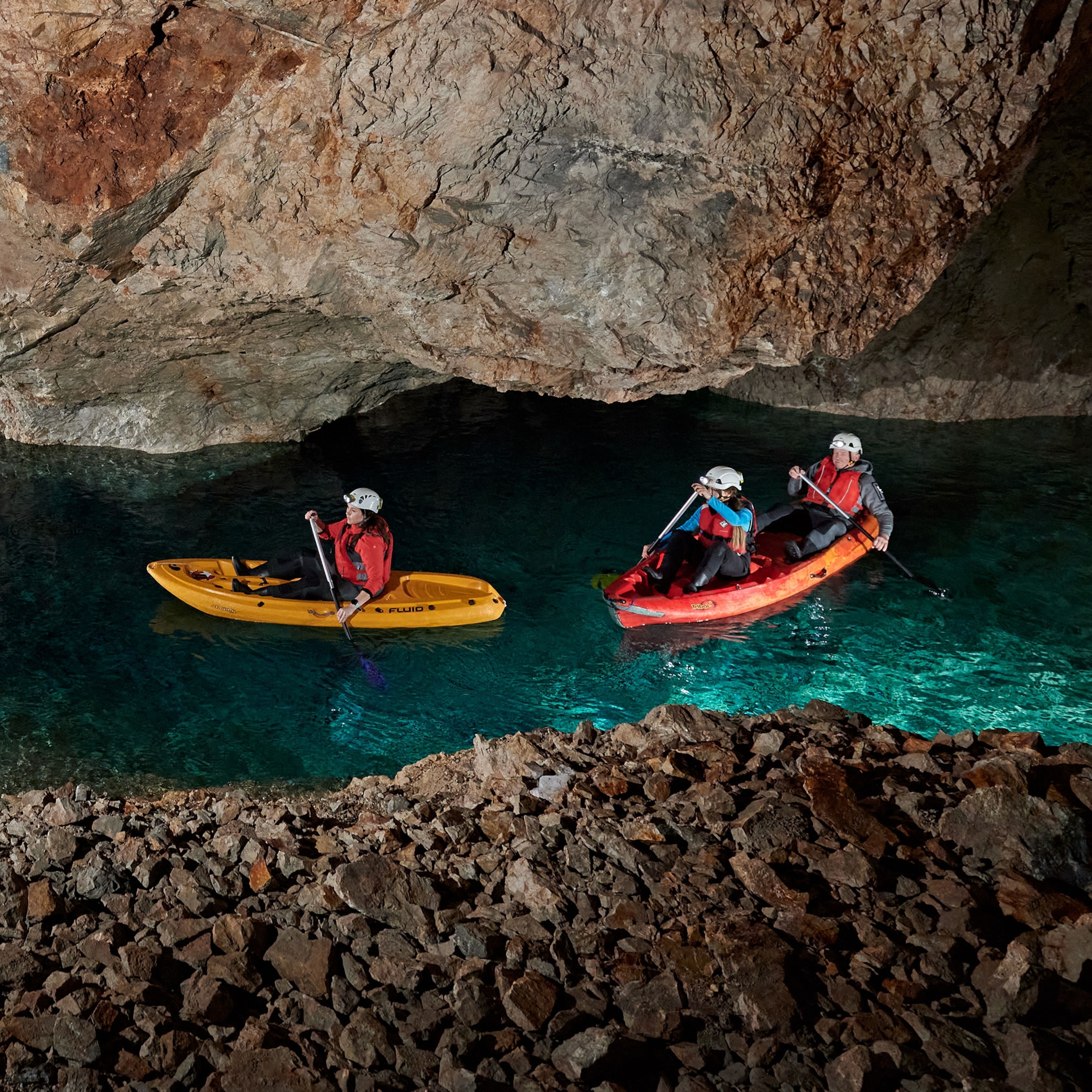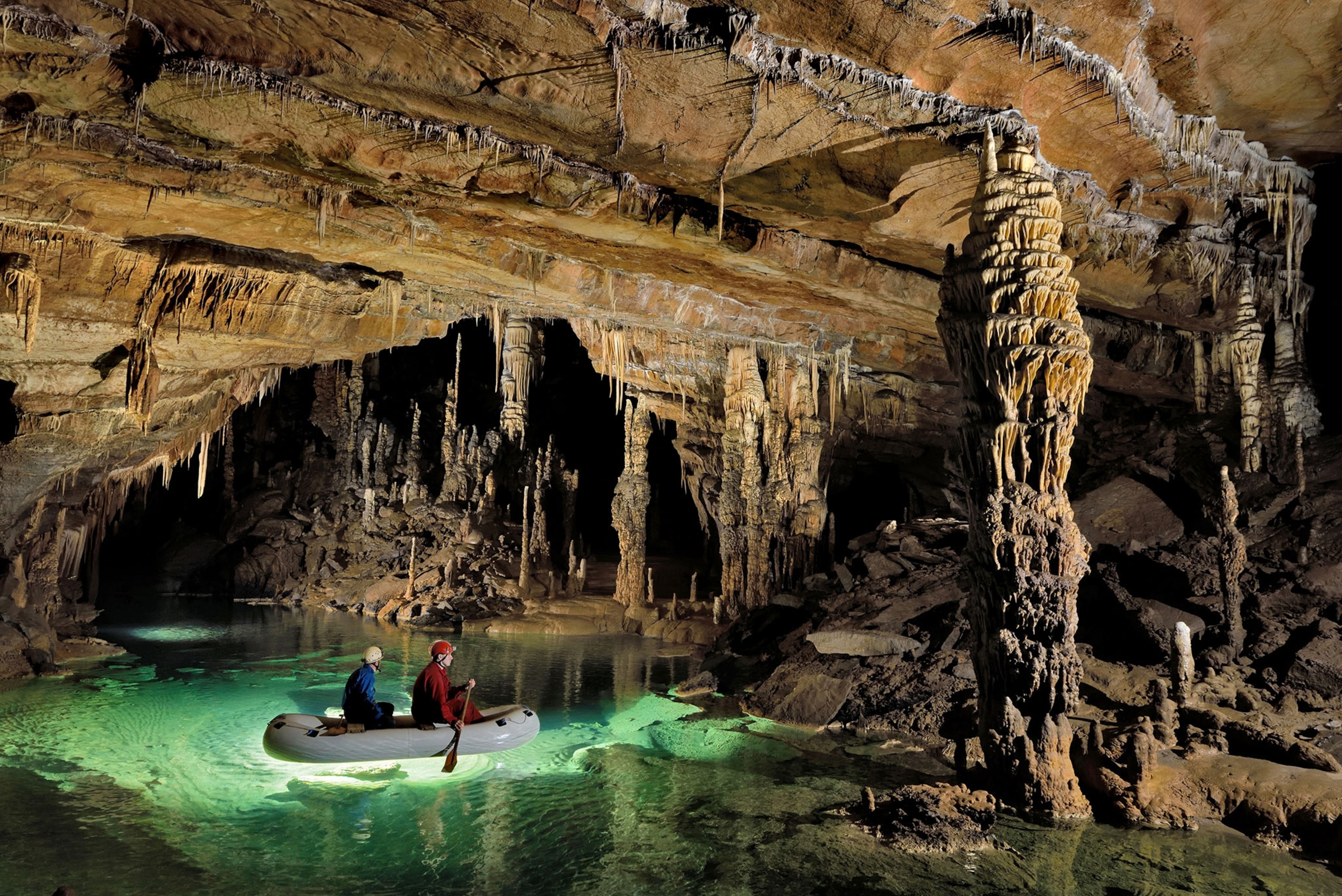
Go Inside These World-Famous, Rarely Seen River Caves
See stunning photos of these strictly protected underground caves in Slovenia.
Slovenia is a world-famous caving destination, with around 8,000 jamas, or caves, located in a country smaller than Vermont. Of those 8,000 formations, however, only around 20 are considered “show caves”—caves that contain a unique beauty and scale that rivals many of the much larger karstic topographies found in southeastern China, Vietnam, Laos, and Papua New Guinea.
A number of powerful rivers traverse Slovenia, mostly overland, but at a few unique locations the rivers will mysteriously disappear into the ground, down into a hidden filigree of subterranean conduits bore through the porous, cavernous limestone.
Robbie Shone, a photographer and caver originally from the U.K. but now living in Austria, has been working to photograph underground points in Slovenia where several of its most famous rivers—namely, the Reka, Rak, and Pivka rivers—either disappear or emerge.
“The Reka river is the key to this whole project,” says Shone, who dreamed of capturing these images for the past decade. “It strings together the entire story.”

Slovenia's Secret Rivers
Beneath the village of Škocjan lie its namesake caves, a UNESCO heritage site, into which an entire river is seemingly swallowed whole by the earth. The Reka River—reka means river in Slovene; hence the Reka Reka—plunges abruptly into a siphon in the rock, yet it continues flowing along a winding, underground channel before ultimately re-emerging 24 miles later near Monfalcone, Italy. Here, it briefly joins the Timavo River and a mile later dumps into the Adriatic Sea.
“River caves are not necessarily rare. You can find them all over the world,” explains Katarina Kosič Ficco, a Slovenian caver and one of the four team members on Shone’s expedition. She is also a PhD candidate in karstology at the University of Nova Gorica, Slovenia, through the Karst Research Institute. “However, there are only a few karst landscapes where the river caves reach such extensive sizes as in Slovenia.”
The Karst Plateau is a geographic region of southwestern Slovenia that stretches from the coast of the Adriatic Sea in the south up to the Vipava Valley, a corridor of the Slovenian Littoral that enters northeastern Italy along a contiguous bedrock of limestone.
Beneath the kras—meaning rock or barren ground in Slovene—lies a complex subterranean world, formed by the limestone’s chemical dissolution over eons. The derivative English term karst typically refers to a landscape shaped by rock susceptible to dissolution. Karstology, the scholarly study of this geological and hydrological phenomenon, was originally pioneered here in Slovenia.
“The main part of caving I love is that you are exploring the unknown and that you are always learning about its development,” says Kosič Ficco. “From a non-scientific perspective, river caves are amazing because they enable the visitor to go canyoning underground, to float the lakes and giant rivers where the sun doesn't shine, observe the amazing power of water in action and aquatic cave animals in their natural environment, and enjoy the beauties of speleothems at the same time.”

Caves with a Purpose
A fusion of Slovene and Italian communities exist along the karst, which yields a terroir conducive to the native Teran grape. The succeeding red wine is best drunk within the first year of fermentation, however, as the high concentration of iron in the fruit doesn’t age well. The wine may very well pair best with a slice of pršut, a regional rendition of prosciutto that’s been dried over many months in the bora winds.
The caves themselves have played many roles throughout history. People have used them as a water resource, a refrigerator, and even storage for munition during war. Throughout the Ice Ages, Križna jama was a vital shelter for bears—some 2,000 bear skeletons remain. Today, river caves are important habitats for many animal species, several of them endangered.
The Postojna jama is Slovenia’s largest and most touristed cave, complete with a train that hauls visitors through labyrinthine tunnels and halls replete with fossils and stunning, pristine speleothems—or cave formations. Postojna and nearby Planinska jama are home to the proteus anguinus, an endangered aquatic cave salamander affectionately called the “human fish.” During Christmas, a nativity scene is erected in Postojna and more than 500 people gather in a single chamber to witness a festive performance staged among the stalactites and stalagmites.
“Slovenia is commonly thought of as the birthplace of recorded cave exploration,” says Kosič Ficco. “It provides variety of caves and enables everyone to go underground. From easy tourist caves to the deepest pit in the world (Vrtoglavica), everyone can find something suitable for their skills.”
Lighting Up an Underground World
For Shone, photographing what is considered a “mecca” destination among cavers was the realization of a longtime dream.
As a child, Shone learned how to draw and paint watercolors from his father. As a teenager, Shone spent weekends at the Lake District, a national park in the U.K., tramping through the hills and painting landscapes in the same vein as Constable and Turner. Shone landed at the University of Sheffield to obtain a fine arts degree while simultaneously pursuing his newfound love of rock climbing on the local Gritstone.
When Shone was 19, a climbing friend and fellow student persuaded him to go on a weekend caving trip in northern England.
“I did not like the idea of going into a cave, into a black, dark space underground where there’s water, dirt, no sunlight,” says Shone. “As a climber, caving sounded so claustrophobic.”
Shone, despite his best instincts, went anyway and soon found himself at the edge of a rim, contemplating an abseil into a dreadful, black abyss.
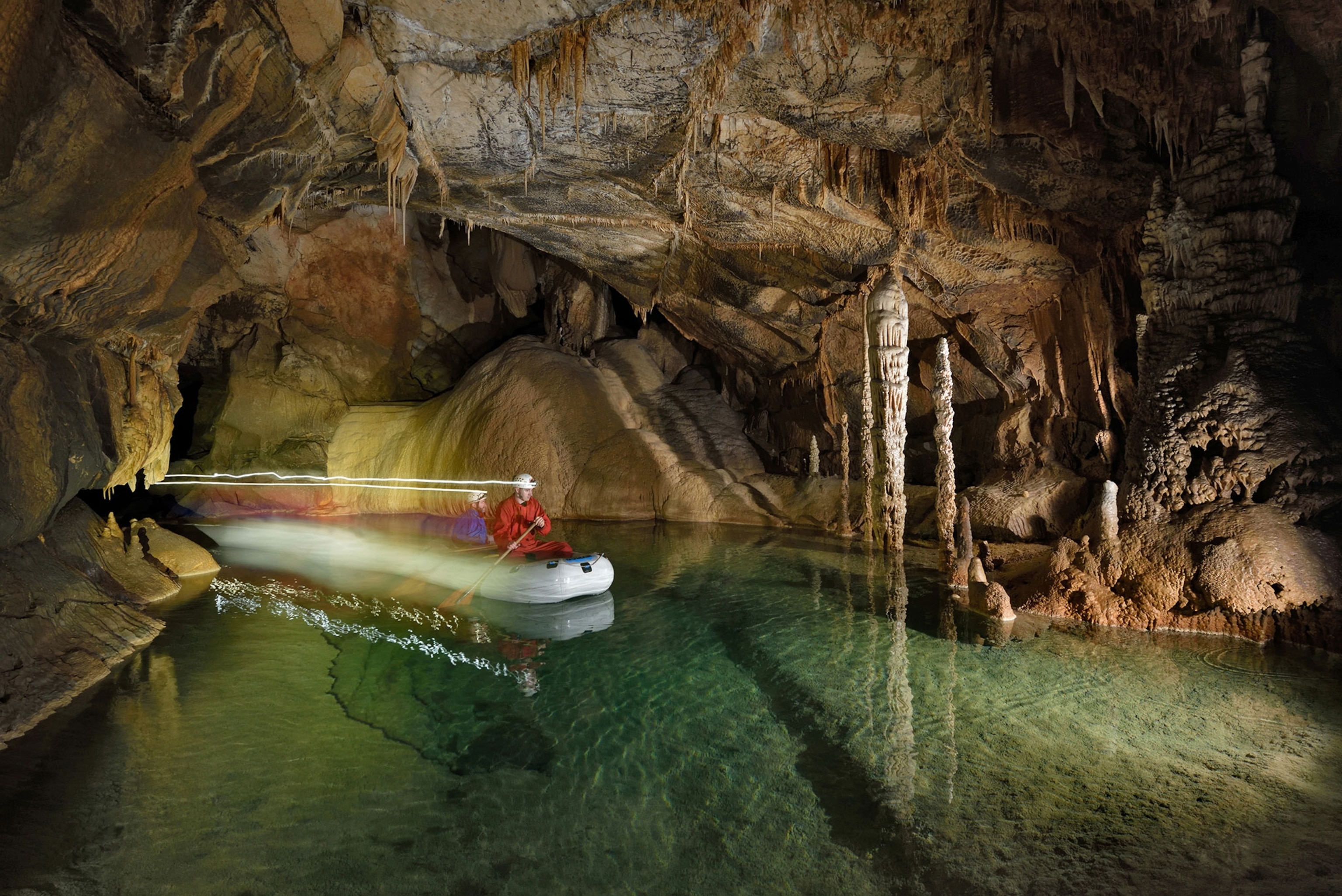
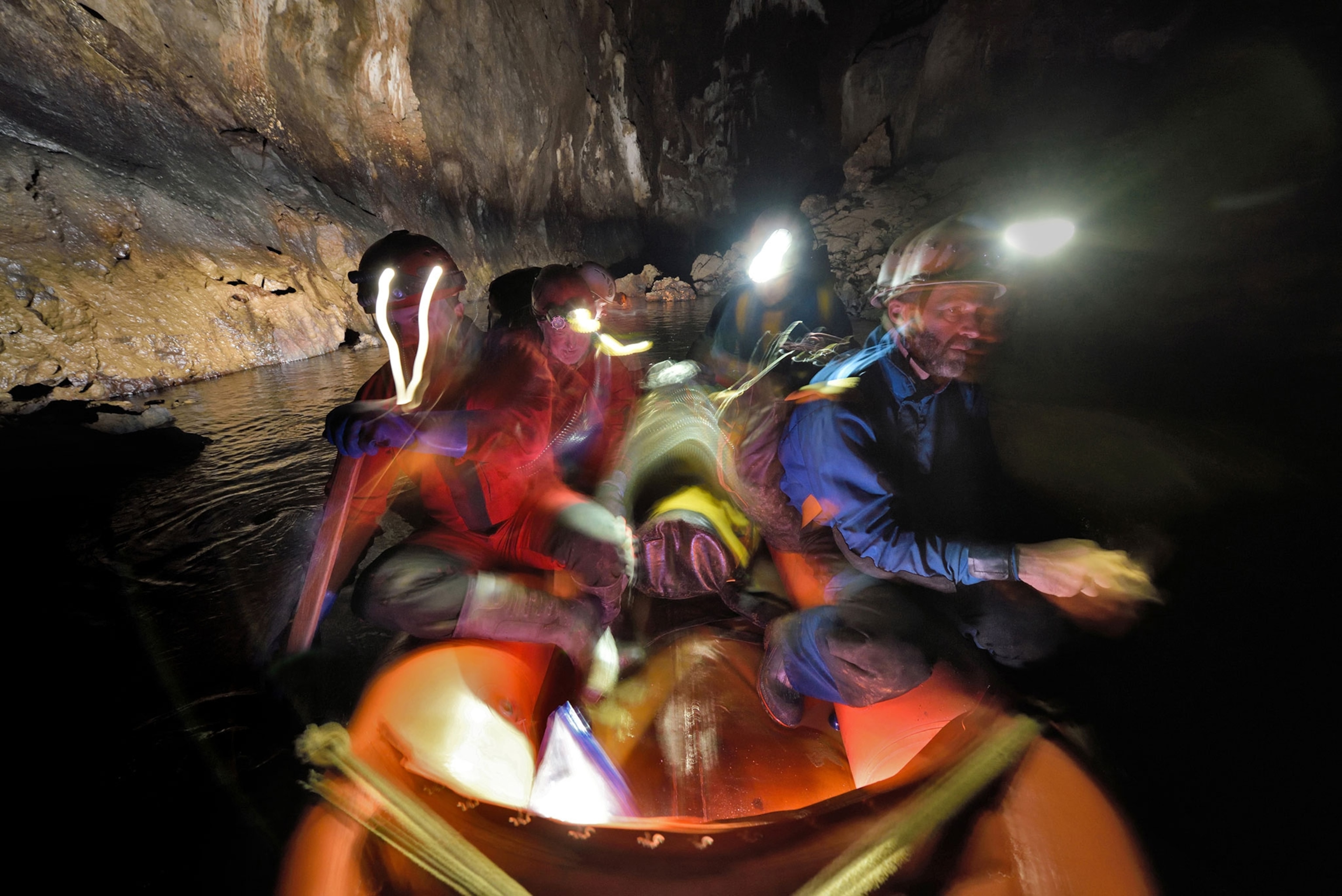
- National Geographic Expeditions
“The adrenaline was so intense. One moment I was standing in this nice sunny, grassy landscape, and within about five seconds, I was plummeting into this completely alien world that I’d never experienced before,” recalls Shone. “It was pitch black, there was a lot of shouting, and roar of the waterfall was so loud I couldn’t even hear myself.”
“But at the same time, I was just absolutely transfixed. It was unbelievable. I’d never felt anything like it before, and I was instantly hooked.”
Shone returned to Sheffield after that first weekend and felt an artistic compulsion to try to recreate the experience the only way he knew how: on a canvas. However, he quickly realized that painting would be an inadequate medium. He went down to the university’s darkroom and borrowed a camera, a moment that ended up changing the course of his life.
For Shone, these twin passions for photography and caving emerged virtually concurrently, then grew in parallel over the next 18 years.
Photographing a dangerous pitch-black room appealed to Shone’s adventurous side, while the technical challenge of working with lights stoked him as an artist.
“Because I’ve got this background as a painter, I’m trying to ‘paint’ with my lights,” Shone says. “It’s not just a case of lighting up some walls and saying, ‘OK, that’s done.’ I’m trying to paint a picture by moving the flashes around, making creative choices about what to highlight and what to leave dark. I’m trying to make it feel like it’s been lit up naturally, which of course is the ultimate challenge because it’s pitch black down there. It’s what I’ve been doing for the last 18 years, and, well, I’m still trying to get it perfect.”
Andrew Bisharat is a writer and climber based in Colorado. Follow him on Instagram @andrewbisharat and Twitter @EveningSends. Robbie Shone is a photographer and cave explorer based in Austria. Follow him on Instagram @ShonePhoto and Twitter @robbieshone.
